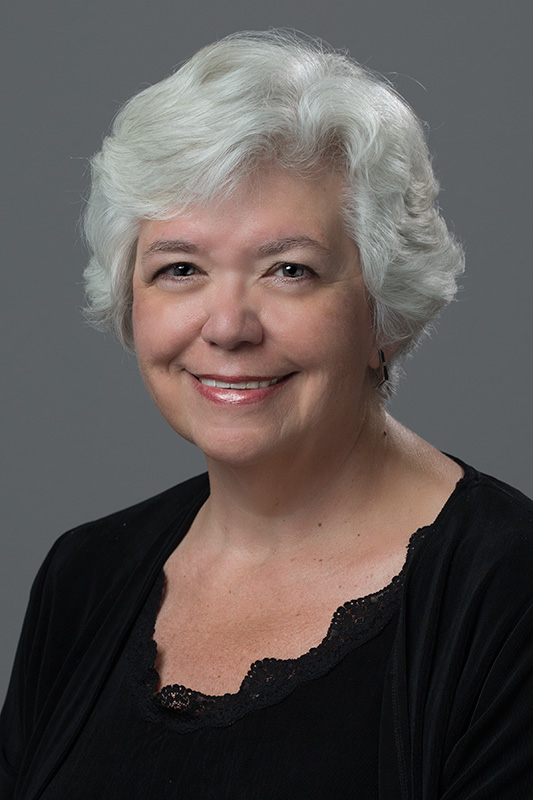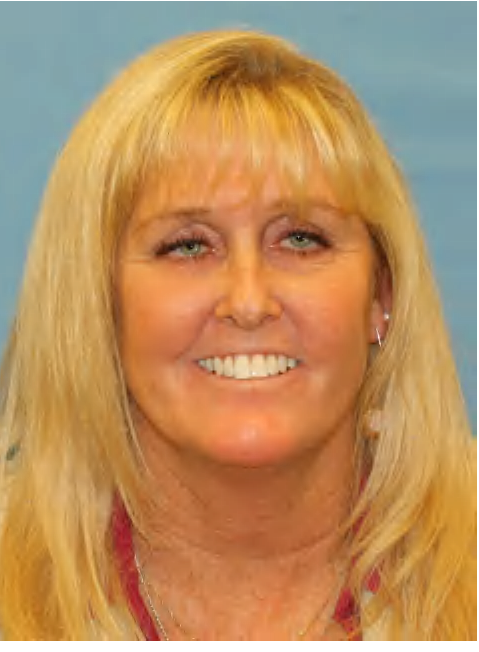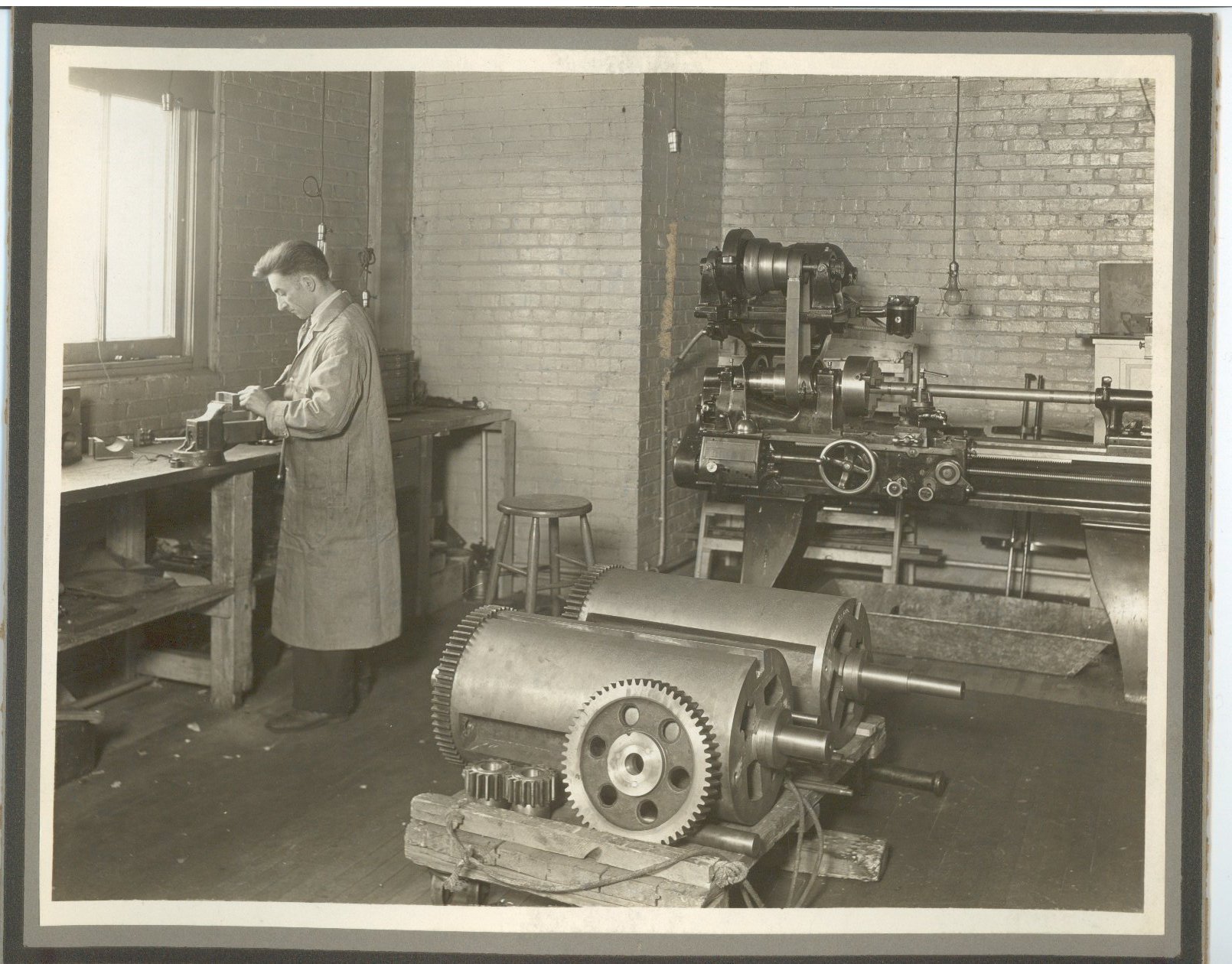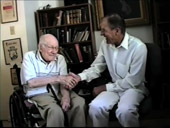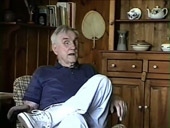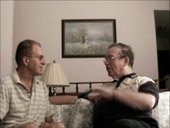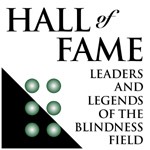News from the Hall of Fame
2024 inductees
The Hall of Fame for Leaders and Legends of the Blindness Field has announced their 2024 inductees: Jane Erin and Tuck Tinsley III. One was a teacher, researcher, and editor, the second began his career as a teacher and became a leader that reinvigorated the American Printing House for the Blind.
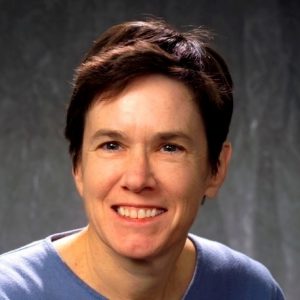 Jane Erin
Jane Erin
In 1971, after earning her bachelor’s degree in secondary education from Edinboro State College, Jane Erin realized she wanted to be a teacher of students with visual impairments. She enrolled at the University of Pittsburgh, where she earned her master’s and doctoral degrees in 1973 and 1984, respectively. While pursuing these degrees, she worked at Western Pennsylvania School for Blind Children.
Erin joined the faculty at the University of Texas at Austin in 1984, where she worked with Natalie Barraga and Anne Corn. In 1994 she became coordinator of the Specialization in Visual Impairment Program at the University of Arizona in Tucson, where she remained until she retired in 2014. Her ability to bring people together to work collaboratively led to the development of innovative programs to prepare teachers of students with visual impairments and orientation and mobility specialists.
Throughout her career, Dr. Erin conducted research and published papers on a wide range of subjects. She has covered topics from diversity to low vision, early braille readers to professionals in the field, from learning strategies of high school students to follow-up studies of specialized school graduates. She was selected by the director of AFB Press, American Foundation for the Blind (AFB), to serve as the first academic Editor-in-Chief of the Journal of Visual Impairment & Blindness (JVIB)—a role she held from 1998 to 2001. She recently worked with AER to establish The New RE:view (TNR) and serves as Assistant Executive Editor. In 1996 Dr. Erin was selected for the Mary K. Bauman Award for Education of Visually Impaired Students from AER. Other awards include the Margaret Bluhm Worker of the Year Award and the Corinne Kirchner Research Award.
Dr. Erin has served the field for 50 years. Her scholarship, leadership, mentorship, and knowledge have impacted countless professionals and the children and adults with visual impairments whom they serve.
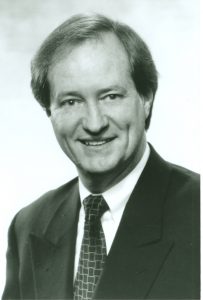
Tuck Tinsley
Dr. Tinsley’s career began at the Florida School for the Deaf and Blind where he was a math teacher, assistant principal, and then principal. The Board of the American Printing House for the Blind (APH) recruited him to join APH as President in 1989. The Board challenged Dr. Tinsley to lead APH into a new phase of its nearly 130 years of existence. As APH entered into the relatively new world of assistive technology and more advanced production practices, this focus attracted talented new employees. New products resulted in new opportunities for students and adults in classrooms and boardrooms across the country.
In Washington, D.C. Tinsley presented to the Subcommittee on the House Labor, Health and Human Services, Education, and Related Agencies to advocate for the education of students who were blind or had low vision. His excitement for the mission of APH was evident and resulted in steadily increasing funding.
Using his national platform, Dr. Tinsley was unwavering in his support for braille literacy. His efforts and published articles proved that new braille production techniques and digital braille displays were making even more braille available.
With funds from the APH endowment, Dr. Tinsley authorized the National Prison Braille Center to be created and housed at APH. This allowed for a more coordinated effort among what had been isolated programs around the country. As a result of this network, textbooks and tactile graphics were reaching students much more quickly.
Dr. Tinsley’s career has always been about kids who were blind or low vision and his desire to make things better than he found them. Whether in the classroom, the boardroom, or on the world’s stage – he has spent his life’s work doing just that.
May 23, 2023 — Dr. Carl Augusto and Dr. Verna Hart to be Inducted into the Hall of Fame for Leaders and Legends of the Blindness Field – 2023
Induction Ceremony
The ceremony to induct Augusto and Hart will take place during APH’s 155th Annual Meeting of Ex Officio Trustees and Special Guests this fall in Louisville. Joining the seventy outstanding legends already in the Hall, Augusto and Hart had significant impact on thousands of aspiring teachers and people who are blind or low vision in their unique leadership roles.
The Class of 2023
Carl Augusto: Friend and Leader
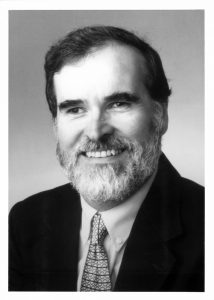
Carl Augusto served as the executive director of the American Foundation for the Blind (AFB) from 1991 until his retirement in 2016. Prior to arriving at AFB, Augusto was the executive director of the Cincinnati Association for the Blind and Visually Impaired (CAB) and worked for eleven years on the National Accreditation Council Serving Agencies for the Blind (NAC). He began his career in 1971 working as a rehabilitation counselor for Helen Keller Services for the Blind and the New York State Commission for the Blind. Augusto holds a master’s degree in Rehabilitation Counseling from New York University, a bachelor’s degree in Psychology from the University of Connecticut and was awarded a Doctor of Humane Letters from Saint Peter’s College in New Jersey.
Under Augusto’s leadership, AFB became the world’s preeminent content provider for the blind on the web. He built a strong leadership team and increased the hiring of blind staff members. He significantly bolstered its technology program and created and expanded the organization’s award-winning web programs and services, such as Family Connect and CareerConnect. He oversaw the establishment of AFB TECH, the Technology and Employment Center at Huntington (West Virginia), the AFB Center on Vision Loss in Dallas, and the establishment of AFB’s Braille Literacy programs.
Augusto received numerous awards, including the Migel Medal from AFB, the Shotwell Award from AER, the Robert B. Irwin Award from National Industries for the Blind, and the Wings of Freedom Award from the American Printing House for the Blind.
Verna Hart: Mother, Teacher, and Advocate
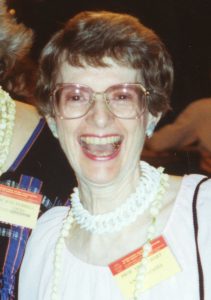
Dr. Verna Hart and her husband were parents of a child with complex needs and, as she told the Committee on Education and Labor of the United States House of Representatives (1986), she pursued a career in special education not of her own choosing: “I had not planned on teaching following the birth of my children, but my second child was born handicapped, and the expense of maintaining that child not only put me back in the workforce, but led me to take both full and part-time jobs.”
Hart received her B.A. in Speech Correction from the University of Michigan in 1950, her M.A. in Deaf Education from Wayne State University in 1964, and her Ed.D. in Multiple Handicaps from Wayne State in 1967.
From 1952-1967, Hart was a special education teacher and administrator in various Michigan public school districts. She joined the faculty of George Peabody College in Nashville, TN as an assistant professor in 1967, where she coordinated programs on multiple handicaps and deafblind education. In 1972 she joined the special education faculty at the University of Pittsburgh where she became a full professor and at various times chaired the department. In the latter phase of her career, Dr. Hart served as a project officer with the United States Department of Education, Office of Special Education Programs, Division of Personnel Preparation. Her impact on thousands of students and teachers in these positions was profound.
Hart was a tireless advocate for children with multiple disabilities. She noted, “Only by examining our successes, as well as our failures, can we really determine just exactly how the education of other children might differ.” She offered ten essential rights of children with multiple disabilities that could not be ignored. These rights emphasized the broad concepts of advocacy of early intervention, parent education and support, well planned lessons, deliberate changes in materials and experiences to support interest and the generalization of concepts, expectations and support for independence, high expectations, real life behavioral consequences, and well trained personnel.
The author of many widely influential publications, Hart was the recipient of the Josephine L. Taylor and Berthold Lowenfeld Awards from AER, and the Award for Excellence in Teacher Education from the Council for Exceptional Children (CEC).
June 27, 2022 — Dr. Kay Ferrell and Trischa Zorn Hudson to be Inducted into the Hall of Fame for Leaders and Legends of the Blindness Field – 2022
Induction Ceremony
The ceremony to induct Ferrell and Hudson will take place during APH’s 154th Annual Meeting of Ex Officio Trustees and Special Guests this fall in Louisville. Joining the sixty-eight outstanding legends already in the Hall, Ferrell and Zorn-Hudson had unique impacts on thousands of students and teachers and served unique roles in their particular areas of endeavor.
The Class of 2022
Kay Ferrell: Teacher, Scholar, and Mentor
Dr. Kay A. Ferrell is Professor Emerita at the University of Northern Colorado (UNC). She has served as Coordinator of the Doctoral Program in Special Education at UNC; Assistant Dean of the UNC College of Education; Coordinator of the Early Childhood Special Education Program, and Coordinator of the Program in Visual Impairment. She served as Associate Director of the American Foundation for the Blind (AFB) Policy Research Center in Washington, DC. Ferrell also had a long career at Columbia University, where she was Coordinator of the Program in Education of Blind and Visually Impaired Learners. She began her service to the field of blindness and visual impairment as an Education Specialist at the Virginia Commission for the Blind. She is a graduate of the University of Pittsburgh, School of Education’s Doctor of Philosophy program in Special Education in 1983.
Dr. Ferrell has led approximately 48 research or personnel preparation grants (totaling external funding support of nearly $19M), including co-authoring two federally funded and nationally recognized leadership grants which enabled the field of blindness and visual impairment to recruit and prepare doctoral-level leaders in all aspects of service to blind and visually impaired children and adults.
One of her five books, Reach Out and Teach, is the standard text for all university programs in early childhood education for students with visual disabilities and she was a lead or second author on countless others. She has presented many influential papers at conferences on topics of research and education of individuals with visual disabilities at the regional, national, and international level. She has also served as a U.S. Delegate to the International Council for Education of People with Visual Impairment.
Dr. Ferrell has served as research advisor and committee member for 52 doctoral graduates at both UNC and Columbia University. She is the recipient of the 2014 Warren G. Bledsoe Award from the AER and the 2013 Migel Medal from the American Foundation for the Blind. She has received the Virgil Zickel Award from the American Printing House for the Blind in 2016; the Alan J Koenig Research Award from the Getting in Touch with Literacy Conference in 2015; the Outstanding Alumni Award from the University of Pittsburgh in 2015; the Mary K. Bauman Award from AER in 2012; the American Foundation for the Blind Corinne M. Kirchner Research Award in 2009; the Distinguished Scholar Award from the UNC in 1999; and the Alumni Award for Outstanding Contributions to Research in Special Education from Teachers College, Columbia University in 1997.
Trischa Zorn-Hudson: Breaker of Glass Ceilings
Trischa Zorn-Hudson is the most decorated athlete in Olympic or Paralympic history. Her Paralympic swimming career spanned from 1980 to 2004, resulting in 55 medals – forty-one gold, nine silver, and five bronze. She was nominated as Sports Illustrated Women of the Year in 1988 and was inducted into the International Paralympic Hall of Fame in 2012.
For 10 years Zorn-Hudson taught in the inner-city schools of Indianapolis and says that years of swimming prepared her in many ways for a professional career in public service. She shares that the students that came through her classroom taught her life lessons she will always cherish. During this time, she pursued her passion for law and was accepted into the McKinney School of Law in Indianapolis. She graduated in 2007 and worked for two years at the Indiana Pro Bono Commission for two years helping those who were living in underserved communities.
Today, Zorn-Hudson works at the U.S. Department of Veterans Affairs as a legal instrument examiner for a 16-state region in helping to protect veterans’ benefits. In her words: “The core values of the agency align to my values of Integrity, Commitment, Advocacy, Respect, and Excellence. It is the agency’s mission and mine to work diligently to serve veterans and their beneficiaries. Further, to be able to see veterans exposed to Paralympic sports after their injuries inspires me to continue to do the work I do daily.” During this time, she also volunteered and was a member of the board of directors for the United States Association for Blind Athletes, which brings sport and opportunities to the lives of blind and visually impaired individuals around the country.
Zorn-Hudson used her athletic stardom to serve as a role model for countless other Paralympians and Paralympic hopefuls. From her teaching of schoolchildren to her current work with blind veterans, she impacted in the blindness community long after her competitive career concluded.
June 1, 2021 — Samuel Bacon and Ambrose Shotwell to be Inducted into the Hall of Fame for Leaders and Legends of the Blindness Field – 2021
Induction Ceremony
The ceremony to induct Bacon and Shotwell will take place during APH’s 153rd Annual Meeting of Ex Officio Trustees and Special Guests this fall in Louisville. Joining the sixty-six outstanding legends already in the Hall, these two pioneers had long careers of service that opened doors and changed the landscape for people that are blind or visually impaired.
The Class of 2021
Samuel Bacon: Founder of Schools
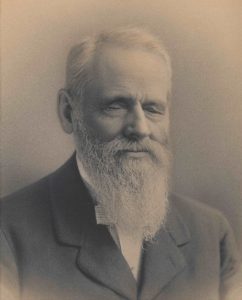
Over his long career in education, Samuel Bacon (1823-1909) founded an amazing three of the historic residential schools for students who were blind or visually impaired. Born in Ohio in 1823, Bacon lost his vision in a bout with scarlet fever in 1834. He attended the Ohio State School for the Blind and Kenyon College, and taught first at his alma mater in Columbus. He was remembered as a brilliant mathematician. Determined to seek his fortune in the west, he only made it to Galena, Illinois before hearing of state plans there to open a new school for the blind.
He founded the Illinois Institution for the Education of the Blind in 1849, around the time of his marriage to his wife, Sarah Graves. In 1852, he moved to Iowa and opened a private school in Keokuk for blind students, which in 1853 was chartered by the State of Iowa as the Asylum for the Instruction of the Blind. Angered by a decision to move the school to Vinton, Iowa in 1861—he felt Vinton was too rural—Bacon quit. He was a fighter for his students, and it often placed him in conflict with politicians.
By 1875, he and his wife were in Nebraska City, Nebraska. Once again, Bacon met with the Nebraska legislature and convinced them of the need for a place for students who were blind. He became the school’s first superintendent that year. At the time it was the western-most residential school for the blind in the country. The school opened on the 10th of March, 1875, with three students. After Bacon retired in 1877, he spent the rest of his life on his farm outside Nebraska City. These three schools continue today to serve the needs of their students validating Bacon’s belief in specialized education for blind students almost 175 years later.
Ambrose M. Shotwell: Benign Agitator
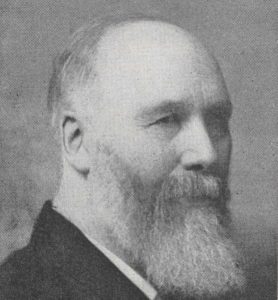
Ambrose Milton Shotwell (1853-1930) was born in New York. His family soon realized that he could see only “sunshine and other bright lights,” a condition later ascribed to “optic nerve atrophe.” At fifteen, Shotwell was enrolled in the first class at the New York State School for the Blind in Batavia. He blossomed academically and graduated in 1873 as valedictorian. As Warren Bledsoe described him, Shotwell was a “benign agitator,” filled with ambitions for “America’s blind people”— and he acted on those aspirations. In 1879, he co-drafted a bill—House Bill No. 13. The bill became law, founding the Michigan School for the Blind in 1880. Returning to teaching, Shotwell taught at the Arkansas School for the Blind in Little Rock from 1880—1883. In 1892, he studied piano tuning at the Michigan School for the Blind but ended up the “school printer and official stereotype-maker,” and remained in that position for eleven years.
In 1895, he joined a group of colleagues in St. Louis, alarmed about the lack of opportunities available for people who were blind in America. An even larger group representing additional states met later to create the American Blind People’s Higher Education and General Improvement Association. In 1902, Shotwell presented a paper at the second biennial conference of the Michigan Blind People’s Welfare Association, which he had helped establish in 1900. His paper led directly to the establishment of the Michigan Employment Institution for the Blind in 1903. Shotwell was made Assistant Superintendent of the institution as well as Librarian, positions he held until his retirement in 1927. In 1905, at a meeting hosted by Shotwell, the American Blind People’s Higher Education and General Improvement Association retooled itself into the American Association of Workers for the Blind (AAWB), a precursor of today’s AER. Shotwell served as Chair of the Committee on Revision of the Constitution and thus helped shape the new association and the future of professionalism in the blindness field.
May 29th, 2020 — Kathleen M. Huebner and Ann MacCuspie to be Inducted into the Hall of Fame for Leaders and Legends of the Blindness Field – 2020
Induction Ceremony
The ceremony to induct Huebner and MacCuspie is scheduled to take place in conjunction with APH’s 152nd Annual Meeting of Ex Officio Trustees and Special Guests this fall. Joining the sixty-four outstanding legends previously inducted, are these two remarkable figures whose work and innovations have changed lives. Their stories of accomplishment are powerful.
The Class of 2020
Kathleen M. Huebner
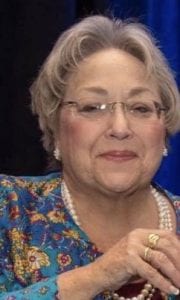
Kathleen Mary Huebner, PhD is Professor Emerita at Salus University. She earned her doctoral degree in 1980 from The University of Pittsburgh, and accepted a position as National Consultant in Education for the American Foundation for the Blind (AFB), where she worked from 1983-1993 impacting many national initiatives.
From 1993 to 2012, Huebner prepared teachers of students with visual impairments and orientation and mobility specialists at Salus University. Her career culminated in two groundbreaking, collaborative, national consortia of universities to increase leadership through preparation of doctoral students in visual impairment, deafblindness, and deaf and hard of hearing — the National Center for Leadership in Visual Impairment (NCLVI) and the National Leadership Center for Sensory Disabilities (NLCSD).
Dr. Huebner’s work has been recognized by both of her alma maters and by the field of blindness. She is the recipient of the Migel Medal (2012) from AFB and the Josephine L. Taylor (2010), Ambrose Shotwell (2008), Mary K. Bauman (2004), and Warren C. Bledsoe (1996) Awards from AER.
Kathy advanced leadership in the fields of visual impairment and deafblindness by bringing university programs from across the United States together as a consortium to create the National Center for Leadership in Visual Impairment.
Ann MacCuspie
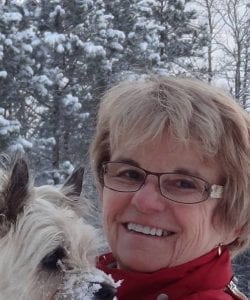
Dr. Ann MacCuspie began her career as a teacher at the Halifax School for the Blind where she became acutely aware of the special needs of children with visual impairments, eventually becoming the director of Programs and Services for Students who are Blind or Visually Impaired at the Atlantic Provinces Special Education Authority (APSEA).
Dr. MacCuspie’s research agenda focused on the social interaction of children with visual impairments and their need for and success in establishing friendships. Her groundbreaking book “Promoting acceptance of children with disabilities: From tolerance to inclusion” is widely cited and has been used as a text in many university classes preparing educators to work with children who are visually impaired.
Recognizing the importance of professional qualifications and standards, Ann assumed primary responsibility for organizing and directing the preparation program at Mount Saint Vincent University and taught courses at The University of British Columbia.
Dr. MacCuspie has received many awards and honors for her work. In 2008 she received the prestigious “Order of Canada” award, the highest award for civilians in Canada recognizing outstanding contributions to the nation.
Dr. Ann MacCuspie is dedicated to the inclusion of all. Her ground-breaking research of inclusion of children who are blind or visually impaired in regular classrooms was a game changer.
June 3, 2019 — Lulu May (Lou) Alonso and Loyal Eugene Apple to be Inducted into the Hall of Fame for Leaders and Legends of the Blindness Field – 2019
Induction Ceremony
The ceremony to induct Alonso and Apple will take place October 11, 2019, in conjunction with APH’s 151st Annual Meeting of Ex Officio Trustees and Special Guests, at the Hyatt Regency Hotel in Louisville, Ken-tucky. Joining the sixty-two outstanding legends previously inducted, are these two remarkable figures whose work and innovations have changed lives. Their stories of accomplishment are powerful.
The Class of 2019
Lulu May Alonso 1925-2012
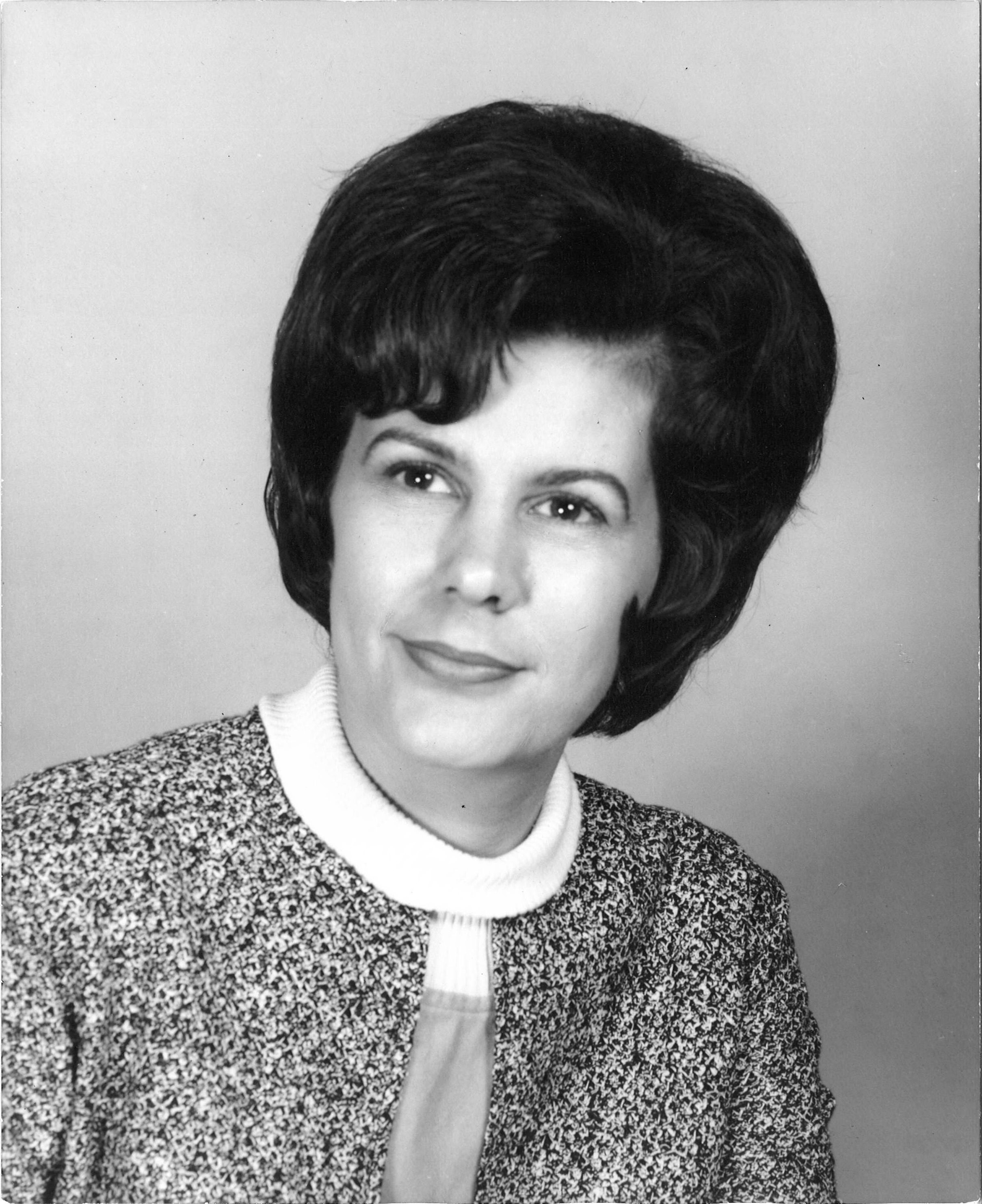
Dr. Alonso successfully coordinated the Teacher Preparation Program in Visual Impairment at Michigan State University for 39 years (1959-1998). In addition, she authored many scholarly works, raised millions of dollars in federal grants for important projects, and initiated university programs in Deaf-Blindness and in Orientation and Mobility. Lou’s initiation of the Deaf-Blind Program was in response to the rubella epidemic, making it one of the first programs in the country.
Lou was the recipient of numerous well-deserved awards including the Helen Keller Medal for outstanding service to deaf-blind children and their families, the John O. Mullen Award for Distinguished Services from the National Federation of the Blind, the Distinguished Service Award from the Division on Visual Impairments, Council for Exceptional Children, and the esteemed Migel Medal from the American Foundation for the Blind.
“Lou invested her life’s work in preparing highly competent teachers to serve children and youth with visual impairments and deaf-blindness. This immensely respected grand lady was devoted to the children, their families, and adult consumers with blindness, as well as her colleagues and students.” –Susan Bruce
Photo courtesy Michigan State University Archives and Historical Collections.
Loyal Eugene Apple 1932-2018
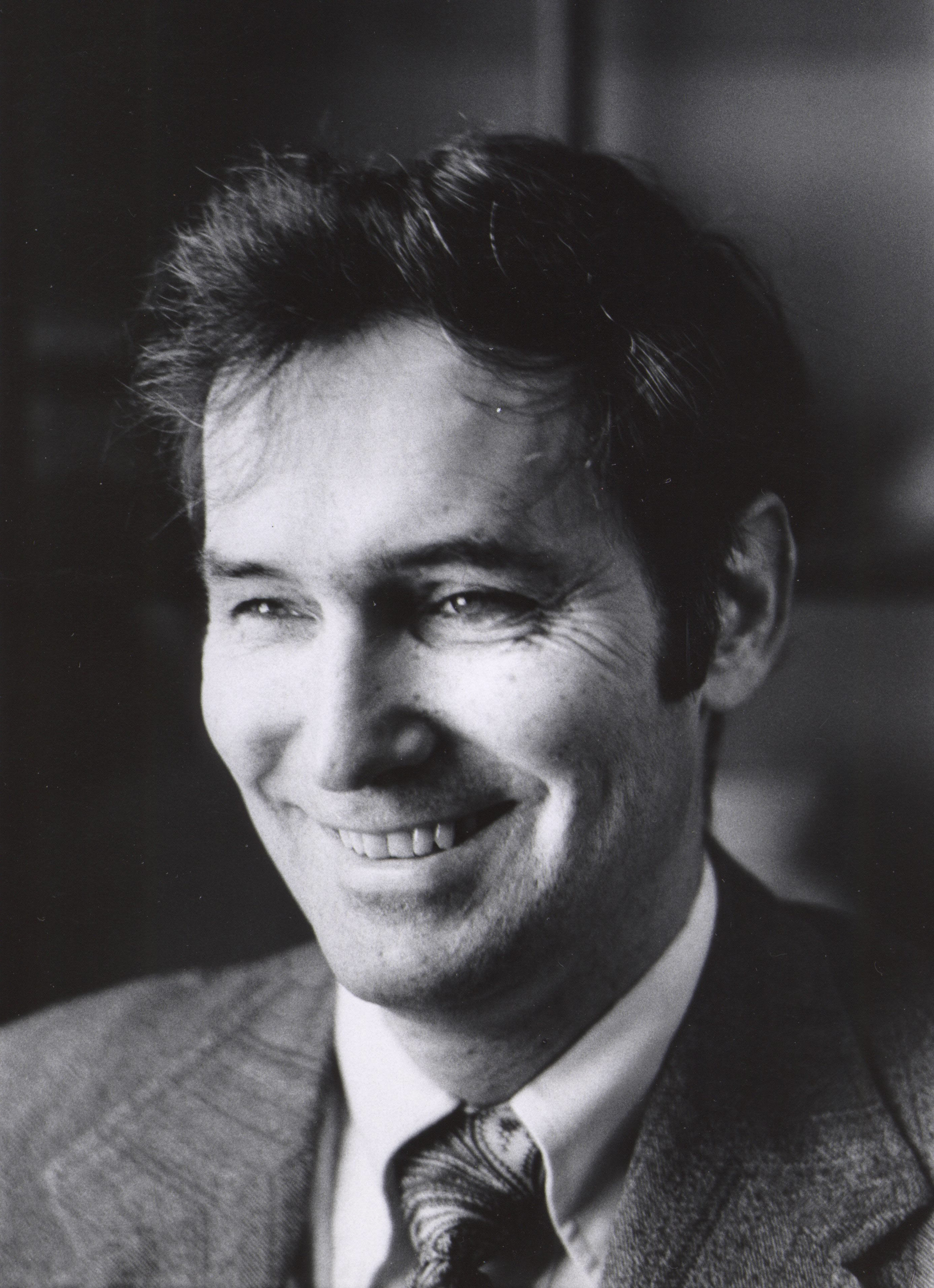
Among Dr. Apple’s positions, over an extraordinary career, were Chief of the Blind Rehabilitation Section of the Veterans Administration Hospital, Hines, IL., First Chief of the Western Blind Rehabilitation Center at Palo Alto, CA, and Executive Director of the American Foundation for the Blind.
Gene and his wife, Marianne, instituted Low Vision Abstracts, an international multidisciplinary research journal that stimulated the blindness field and educators of the blind to research and report many new aspects of understanding and servicing the low vision population.
Among his many honors and awards was the Commendation from Hines Veterans Administration Hospital for exemplary leadership in blind rehabilitation and the Major General Melvin J. Maas Achievement Award from the Blinded Veterans Association for exemplifying the principles of initiative, independence, and self-reliance.
“There was no earthly force, including the explosive accident that took his optical vision, that could sideline or even slow down the accomplishments of this “Hewer, Hauler, Fetcher, Carrier, Inventor, Shining Example, and Philosopher.” –Warren Bledsoe
Photo courtesy AFB Helen Keller Archives.
February 22, 2019 — In Memoriam Susan J. Spungin
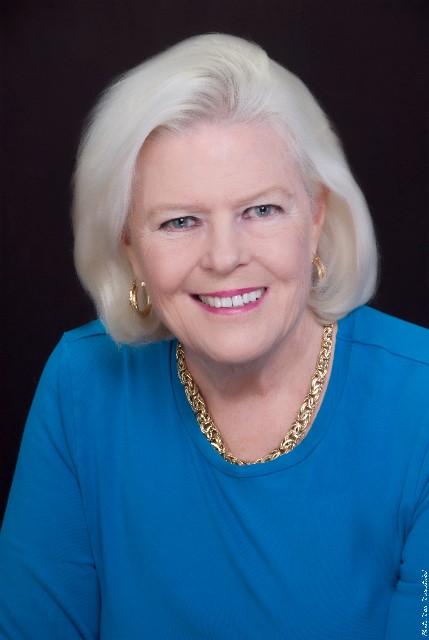
This week we are saddened by the passing of one of our newest Hall of Fame inductees. Dr. Susan Spungin Hanke. She will be remembered as a voice of reason who had extraordinary skill in connecting individuals, families, professionals, and agencies to improve services for people with visual impairments.
Dr. Spungin Hanke held key leadership roles in almost every national and international organization related to blindness and visual impairment. She began her work for the American Foundation for the Blind in 1972, where she was a Specialist in Education. In 2008, she retired from AFB as Vice President of International Programs and Special Projects. Among the more than 80 publications she wrote were foundational works in education, Including the Competency Curriculum for Teachers of Visually Handicapped, one of the first publications to recognize the specialized role of educators with students with visual impairments. She was Secretary and Council of Division Chairs of AER, president of the New York Chapter of AER; Chair of BANA; Vice President of the International Council for the Education of the Visually Handicapped; and Treasurer of the World Blind Union. She was also on the original advisory board of this Hall of Fame, served as president of the Personnel Preparation Division 17 of AER. She particularly valued her role in developing the National Association of Parents of Children with Visual Impairments (NAPVI).
As an advocate, scholar, and leader, Dr. Spungin Hanke motivated us to look beyond the present moment. She provided a model for excellence, persistence, and planning for change. Her insights and accomplishments remind us that people with visual impairments can enjoy an improved quality of life through with support from educated professionals. She will be greatly missed, and she leaves behind a world that is better because of her work.
May 29, 2018 — Frank H. Hall and Susan J. Spungin to be Inducted into the Hall of Fame for Leaders and Legends of the Blindness Field in 2018
Induction Ceremony
The ceremony to induct Hall and Spungin will take place October 5, 2018, in conjunction with APH’s 150th Annual Meeting of Ex Officio Trustees and Special Guests, at the Hyatt Regency Hotel in Louisville, Kentucky. Joining the sixty outstanding legends previously inducted, are these two remarkable figures whose work and innovations have changed lives. Their stories of accomplishment are powerful.
The Class of 2018
Frank H. Hall, 1841-1911
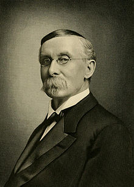
Frank Hall was appointed as Superintendent of the Illinois School for the Blind in 1890 where he focused his efforts on braille. Observing that the use of the slate and stylus to produce braille was a slow process, Hall conceived the idea to invent a typewriter-like machine that would make the production of braille more efficient. Hall’s machine was the first to be mass-produced and by 1911, over two thousand machines were being used. By January, 1893, he had also developed the stereotyper, producing stereotypes that could impress braille on a thin brass plate. Hall exhibited the stereotyper at the Chicago World’s Fair in 1893. One of the visitors to Hall’s booth was thirteen-year-old Helen Keller.
Hall’s leadership as superintendent was marked by his belief that persons who were blind should be trained and work competitively with individuals who were sighted. He promoted the application of abstract knowledge to real life situations and introduced manual training classes. He also strongly promoted physical education for his students.
In 1900, Hall lobbied the Chicago Board of Education to equip public schools so that children who were blind could attend regular classes with children who were sighted in their own neighborhood. His plan was adopted and for the first time in the United States, children who were blind were integrated into regular public school classrooms on a large scale.
Susan J. Spungin, 1941—
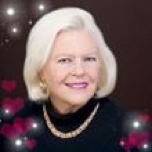
An internationally renowned expert in the education and rehabilitation of individuals who are blind or visually impaired, Dr. Spungin joined AFB in 1972 as a national specialist in education. Through her years of leadership, she identified nationwide issues affecting children and youth who were blind and severely visually impaired, and worked in partnership with schools, agencies, state departments of education, universities, the federal government, and other organizations to help resolve those issues.
In addition to her education work, Dr. Spungin was instrumental in shaping AFB’s research and policy work, and its national programs in such areas as early childhood development, aging, employment, low vision, and career education. She also coordinated AFB’s international activities and was an active force in many organizations including AER, NAPVI, and the World Blind Union. She retired from AFB as Vice President, International Programs and Special Projects in 2008.
Dr. Spungin’s prestigious awards include the NAPVI Founders Award, the APH Wings of Freedom Award, the AER Mary K. Bauman Award, the Mary E. Switzer Scholars award, the CEC-DVI Distinguished Service Award, the AFB Equality of Access & Opportunity Award for her work in braille literacy, the Josephine L. Taylor Award from the University Division of AER and AFB’s Migel Medal. In 1991, Dr. Spungin also became the first sighted woman to receive the Russian Medal from the Byelorussian Association of the Blind.
May 30, 2017 — Robert Smithdas and William B. Wait to be Inducted into the Hall of Fame for Leaders and Legends of the Blindness Field in 2017
Induction Ceremony in October
The ceremony to induct Smithdas and Wait will take place in October 2017, in conjunction with APH’s 149th Annual Meeting of Ex Officio Trustees and Special Guests, at the Hyatt Regency Hotel in Louisville, Kentucky. Joining the fifty-eight outstanding legends previously inducted, are these two remarkable figures whose innovations changed lives. Their stories of accomplishment are powerful.
The Class of 2017
Robert J. Smithdas, 1925-2014
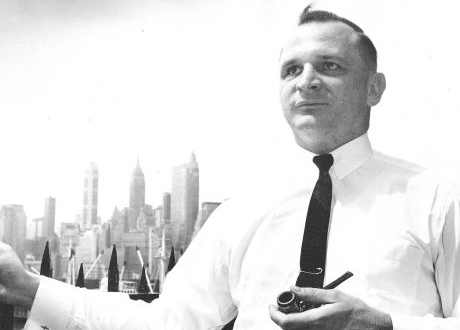
Smithdas served as Associate Director of Services for the Deaf-Blind, Helen Keller National Center. Continuing the work of Helen Keller, his eloquence, example, and lobbying led to the development of legislation enacted in the 1967 Amendments to the Vocational Rehabilitation Act, and which authorized the establishment of the Helen Keller National Center for Deaf-Blind Youths and Adults.
Smithdas was awarded four honorary doctoral degrees, was named Handicapped American of the Year, served on the President’s Committee on Employment of People Who Are Disabled, was awarded AFB’s Migel Medal and the Peter J. Salmon Memorial Award, was inducted into the National Hall of Fame for Persons with Disabilities, and was the Poetry Society of America’s Poet of the Year.
“I saw firsthand the effect he had on visitors, professionals in the fields of education and rehabilitation, parents of children who are deaf-blind, and, most importantly, the deaf-blind individuals themselves. He was a role model for students who came to HKNC, a person they looked up to and would often visit with to discuss their goals and the day to day challenges they faced.” —Joseph J. McNulty
William B. Wait, 1839–1916
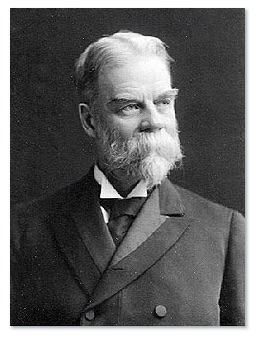
Wait was Superintendent of the New York Institute for the Blind for forty-one years and was heavily involved with the American Association of Instructors of the Blind. He Also invented and promoted the tactile writing method, New York Point.
In addition to administering the institute and writing books on the education of the blind, Wait developed a method of musical notation, invented equipment to produce his point materials, developed the kleidograph for embossing his New York Point system on paper, invented the sterograph for embossing metal plates for producing books, developed a method of embossing New York Point on both sides of a piece of paper, and developed and patented a method of binding books in New York Point that improved their durability and reduced the cost of producing the books.
In 1879, Wait was spokesman for a committee that successfully lobbied the U.S. Congress for the first allocation of federal funds to be administered by the American Printing House for the Blind, in order to produce books and devices for the education of blind and visually impaired students.
“It is amazing to think that one person could accomplish so much. The Institute prospered under his direction and his contributions to the field of blindness were so important to the future of literacy and education for children who are blind.” —Bernadette Kappen
August 31, 2016 — In Memoriam Will D. Evans
The Hall has lost a hero and champion in the passing of founding advisory board member Will D. Evans. Twice honored with stones on the Wall of Tribute, this remarkable man was beloved by all who knew him.
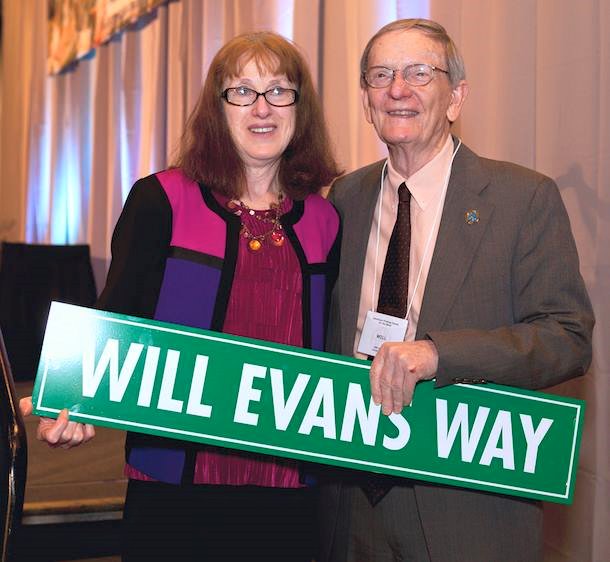
Will D. Evans was legendary, both at the Kentucky School for the Blind and later at the American Printing House for the Blind for his insight, wisdom, and passion for helping people who are blind and visually impaired lead independent lives. Evans retired from APH as our Products and Services Advisor and was known as an “elder statesman” who had thoughtful perspectives on all aspects of our field. Many staff members went to Evans for advice, both professionally and personally. He will be greatly missed.
The photo depicts Will Evans with Mary Robinson. Robinson worked with Will for many years at both KSB and APH. Will is holding his “street sign,” reading “Will Evans Way.” The driveway that runs between KSB and APH is named “Will Evans Way” in his honor.
http://arch-l-heady-son-cralle.tributes.com/dignitymemorial/obituary/Will-D.-Evans-103898067
June 16, 2016 — Sir Charles Frederick Fraser and Dr. Randall T. Jose to be Inducted into the Hall of Fame for Leaders and Legends of the Blindness Field in 2016
The Hall of Fame is dedicated to preserving the tradition of excellence manifested by specific individuals through the history of outstanding services provided to people who are blind or visually impaired in North America. Although housed at the American Printing House for the Blind (APH) in Louisville, Kentucky, it belongs to the entire field.
Induction Ceremony
The ceremony to induct Fraser and Jose, will take place on Friday evening, October 7, 2016, in conjunction with APH’s 148th Annual Meeting of Ex Officio Trustees and Special Guests, at the Hyatt Regency Hotel in Louisville, Kentucky. Joining the fifty-six outstanding legends previously inducted, are these two remarkable figures whose innovations changed lives. Their stories of accomplishment are powerful.
The Class of 2016:
Charles Frederick Fraser, 1850-1925
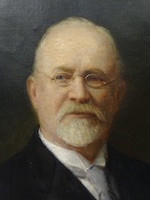
Sir Frederick Fraser was an inspirational, dedicated and innovative educator of the blind. He dedicated his life’s work to creating educational and vocational programs and services to allow those with visual impairments to become self-supporting and contributing citizens. In 1873, at age 22, he became the first superintendent of the “Halifax Asylum for the Blind,” named the Halifax School for the Blind in 1884 due to his efforts, which provided comprehensive programs in primary through high school education, physical education, music, and vocational and career skills and education to students from four Atlantic provinces.
Fraser established a provincial circulating library of Braille books in 1881, and in 1898 was successful in persuading the Canadian Post Office to handle Braille books postage-free which is still in effect today. In 1883, Fraser expanded a financial assistance program for graduates embarking on careers or further training. He also founded the Canadian Printing House for the Blind which was housed at the school (1901). In June 1914 He was knighted and referred to as the “the blind Knight of Nova Scotia.”
Randall T. Jose, 1943-
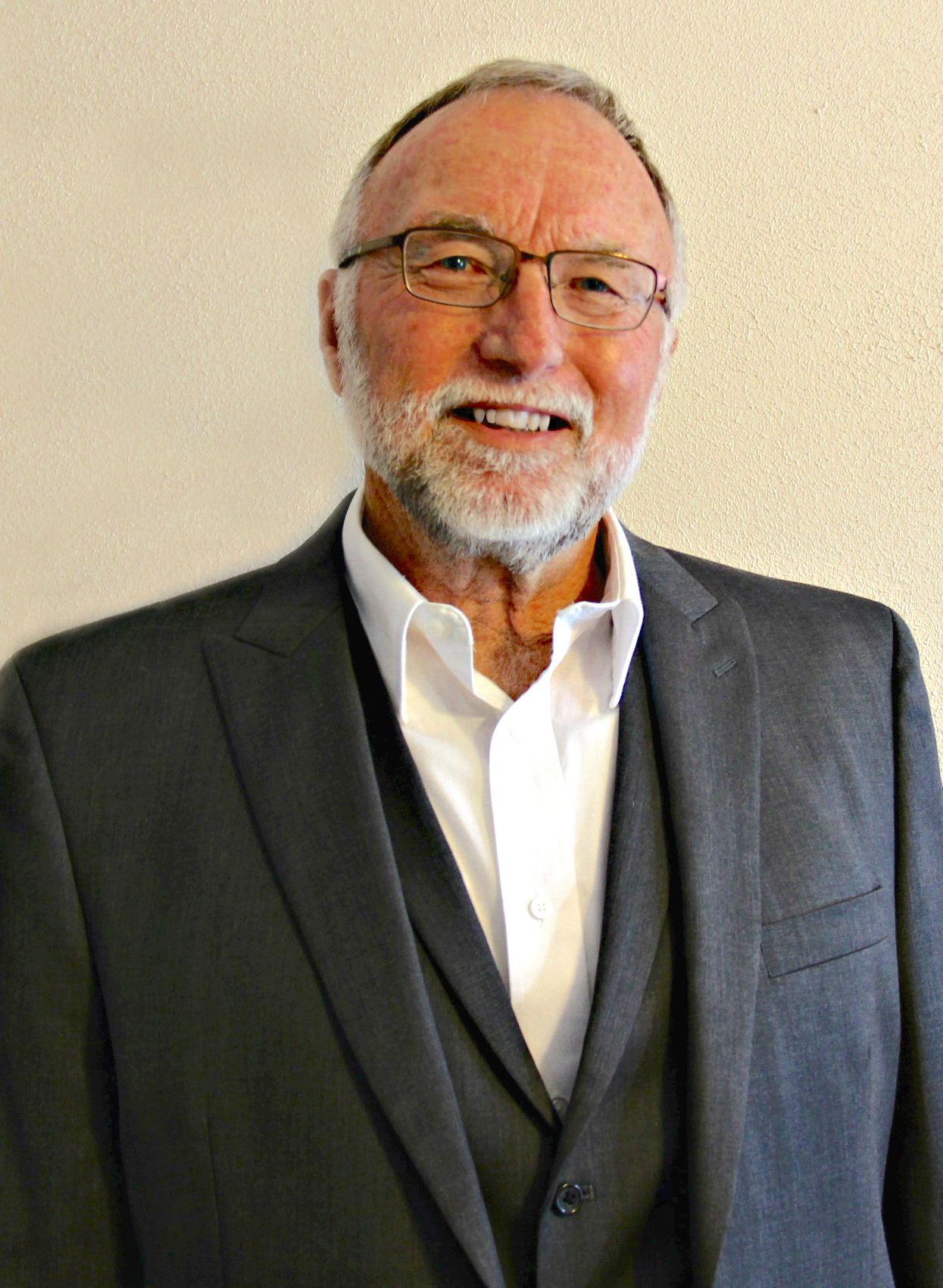
Dr. Randy Jose is the founding chairman of the Diplomat of the Low Vision Section of the American Academy of Optometry, receiving his doctorate at UC Berkley, where he then taught. A tenured professor at the University of Houston, he also served as the Clinical Director at the Lighthouse of Houston and the Tulsa Low Vision Center, a new concept in the delivery of low vision services in the private sector. Later he became the Director of Clinical Services for UH’s Center for Sight Enhancement.
The author of over 50 articles, Jose authored the low vision text, “Understanding Low Vision” which received AAWB’s Bledsoe Award. He also co-authored, “The Art and Practice of Low Vision” and has received AER’s McFarland Award and the American Optometric Association’s Vision Care Award.
September 2015 — JOHN MAXSON, former Hall of Fame Board Member, passes away
Board chair Billy Brookshire shares:
Well, folks, I have some sad news. My friend & mentor John Maxson, former AAWB President & former Training Director at MSU/RRTC, has passed. John was a true pioneer in our field who helped bring us all together.
Here is a link to a video where John & friends unveiled the 32 Heroes & Pioneers of the Blindness Field, all of whom became the first inductees into the Hall of Fame for Leaders & Legends of the Blindness Field.
BJ LeJeune’s note regarding John’s passing on AERNet: Yesterday John passed away – one day before his 73rd Birthday. He was a strong advocate for high quality professional development and recognition. He was instrumental in the merging of our 2 professional organizations into what is now AER. He also was a strong advocate in the founding of the Hall of Fame of Leaders and Legends in our field. In his career which started as an O & M instructor, he also was the Dean of Students at the NM School for the Blind, pass director of AAWB, the training director at the NRTC at MSU, and the director of the Foundation for Blind Children. He had suffered quite a bit with the ravages of Agent Orange poisoning from his service in Vietnam, which is what contributed to his death. He is survived by his wife Dona and his daughters Jenny and Kym. Also by 6 grandchildren. He will have a military burial in Crescent City CA. The family asks that donations be sent to the Wounded Warrior Project or the Vietnam Veterans of America. He would have also been pleased by donations to the Hall of Fame for Leaders and Legends in the Blindness Field. Rest in Peace, John.
Fresh Insights from Jo Taylor
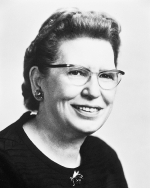
For the first time, you can enjoy a never before published 1987 interview with Josephine L. Taylor, gently edited by the original interviewer, Michael Bina. This historic narrative provides the reader with a unique glimpse in to the life and motivation of one of our most legendary figures. You will most assuredly enjoy and gain valuable insights from this fascinating find.
Our sincere gratitude to Dr. Bina for giving the Hall this amazing gift.
May 12, 2015 — Sir Francis Campbell and Dr. Alan Koenig to be Inducted into the Hall of Fame for Leaders and Legends of the Blindness Field in 2015
The Hall of Fame is dedicated to preserving the tradition of excellence manifested by specific individuals through the history of outstanding services provided to people who are blind or visually impaired in North America. Although housed at the American Printing House for the Blind (APH) in Louisville, Kentucky, it belongs to the entire field.
The ceremony to induct Campbell and Koenig, will take place on Friday evening, October 9, 2015, in conjunction with APH’s 147th Annual Meeting of Ex Officio Trustees and Special Guests, at the Hyatt Regency Hotel in Louisville, Kentucky. Joining the fifty-four outstanding legends previously inducted, are these two remarkable figures who changed lives around the world. Their stories of accomplishment are powerful.
The Class of 2015
Francis Joseph Campbell (1832–1914)
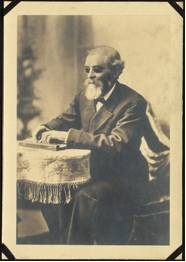
Sir Francis Campbell’s service began as a music teacher and interim Superintendent of the Tennessee School for the Blind in 1850. He then served as a music teacher and special assistant to Dr. Samuel Gridley Howe at the Perkins School for the Blind from 1857 to 1868. In 1872, he established the Royal Normal College and Academy of Music for the Blind (RNC) in London where he served as Principal until retirement in 1912. His school was built on the belief that blind people can accomplish great things with good instruction. He built a firm base of physical education and provided strong academic training with an emphasis on logic and mathematics as a basis for music instruction. Campbell’s school was enormously successful. Today it is known as the Royal National College and continues to receive awards for its status as an extremely effective school and training program for people who are blind.
“Francis Campbell was the character and personality on which modern work for the blind hinged. After Howe, he was the undoubted champion of the capabilities of blind people, both by his own example, his demands on himself and what he asked of other blind people and society.” —C. Warren Bledsoe
“His approach was based on a realistic understanding of what was capable without vision and on a strong belief in the ability of blind people to function independently. He demonstrated the value of educating the whole child. He understood the need to encourage the development of the physical, intellectual, and emotional sides of each individual. And he appreciated the need for functional life skills that lead to jobs that enabled independence. By including Francis Campbell in our Hall of Fame, we will not only honor his work, but we will create an opportunity for future professionals in this field to be influenced by his insights and success.” —Dr. Richard Welsh
Alan J. Koenig (1954–2005)
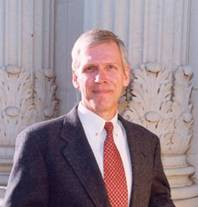
Dr. Koenig strongly influenced the way teachers of students with visual impairments (TVIs) viewed their roles and responsibilities related to literacy instruction. Alan was clear that TVIs are teaching reading and writing when they provide instruction to young children who will read braille or children with low vision who will read print.
Koenig revolutionized the way that educational teams approach the decision regarding whether a student with low vision should begin reading and writing in braille, print, or a combination of braille and print. Prior to his landmark work on Learning Media Assessment (LMA), teachers and parents struggled with the decision of whether to teach a child braille or print. LMA provides a data-driven procedure that supports decisions of educational teams. For the first time, teachers and parents had a systematic guide for gathering pertinent information and using that information to support on-going educational decisions.
“Dr. Koenig shared his knowledge, expertise, and love of the field of visual impairment with thousands of people at over 150 conference presentations and workshops both locally and internationally. Of particular note was his support of the Unified English Braille (UEB) code. Twenty years ago, the thought of introducing a new braille code to North America was daunting. Without his early support, Canada would likely not be where it is today with respect to UEB.” —Dr. Carol Farrenkopf
“I was fortunate to work with and learn from Alan. My life and my work is better because of my collaboration with him. Although I was his closest and most frequent collaborator, I was by no means alone. Alan was a generous colleague and published with 42 co-authors. Each of these people will have a tale to tell about Alan’s influence on them!” —Dr. Cay Holbrook
May 12, 2015
AER “Heroes And Pioneers” Presentation, July 2000
Recovered from the dark archival depths of a neglected desk drawer, we present this video from the year 2000 at the AER International Conference in Denver, Colorado. The presentation, “Heroes and Pioneers,” was the catalyst for our Hall of Fame.
Stars on the stage are Michael Nelipovich, Rod Kossick, and John Maxson. The biographical material was researched and written by Dean and Naomi Tuttle, who were in the audience.
The 32 heroes that they honored with individual posters became our first 32 Hall of Fame inductees.
February 9, 2015
2015 Hall of Fame Governing Board
In December 2014, the Hall of Fame Board traveled to Louisville for the first “face to face” meeting since 2008. At that meeting Billy Brookshire was elected as the new Chair. Sadly, the board had to say goodbye to the voting members rotating off the board, including Janie Blome, Mike Cole, John Maxson, and Diane Wormsley. The board welcomed new members by telephone, including Jim Deremeik, Marje Kaiser, BJ LeJeune, Gary Mudd, Ann Wadsworth, and George Zimmerman. Janie Blome became an Ex Officio Trustee and took over as Curator from Bob Brasher, who remains as an Ex Officio Trustee. At a telephone meeting in January, the officers for 2015 were elected.
Here is the 2015 slate of officers and Hall of Fame board member roster:
- Billy Brookshire (TX), Chair
- Greg Goodrich (CA), Vice Chair
- Marje Kaiser (SD), Secretary
- George Zimmerman (PA), Treasurer
- Jim Deremeik (MD)
- BJ LeJeune (MS)
- Ann MacCuspie (CAN)
- Gary Mudd (KY)
- Rosanne Silberman (NY)
- Ann Wadsworth (CAN)
- Jane Erin (AZ), Past Chair
- Janie Blome (KY), Ex Officio Member and Curator
- Bob Brasher, (KY/AR), Ex Officio Member
December 30, 2014
Kathleen Huebner writes:
One of our Hall of Famers has passed on to another life. Natalie Barraga was a leader among us. She recognized the potential of individuals with low vision. I urge all my colleagues in the education and rehabilitation of individuals who are blind or have low vision to visit the Hall of Fame site located at APH. Besides her history there are interviews and videos and many photos of her smiling and laughing heartily. Many of us were privilege to not only learn from her but to work with her and enjoy her friendship. She will live on in many hearts.
December 10, 2014
The Board of the Hall of Fame for the Blindness Field met in Louisville (December 9-10) for the first face-to-face meeting since 2008.
First picture:
1st row — Rosanne Silberman (NY), Jane Erin, Chair (AZ), Ann MacCuspie, Secretary (CAN).
2nd row — Greg Goodrich (CA), Janie Blome, Tresurer (KY), Bob Brasher, Curator (KY), Jim Deremeik (MD), Mike Cole (CA), Billy Brookshire, Chair-Elect (TX).
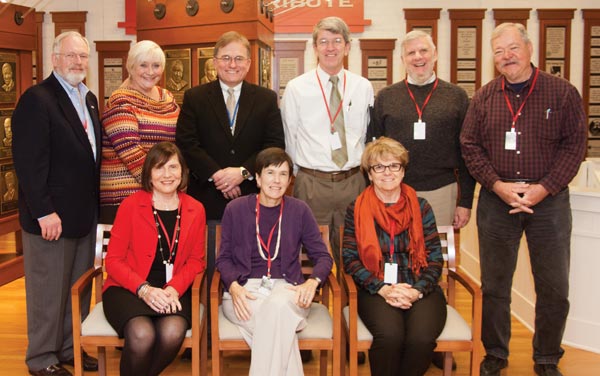
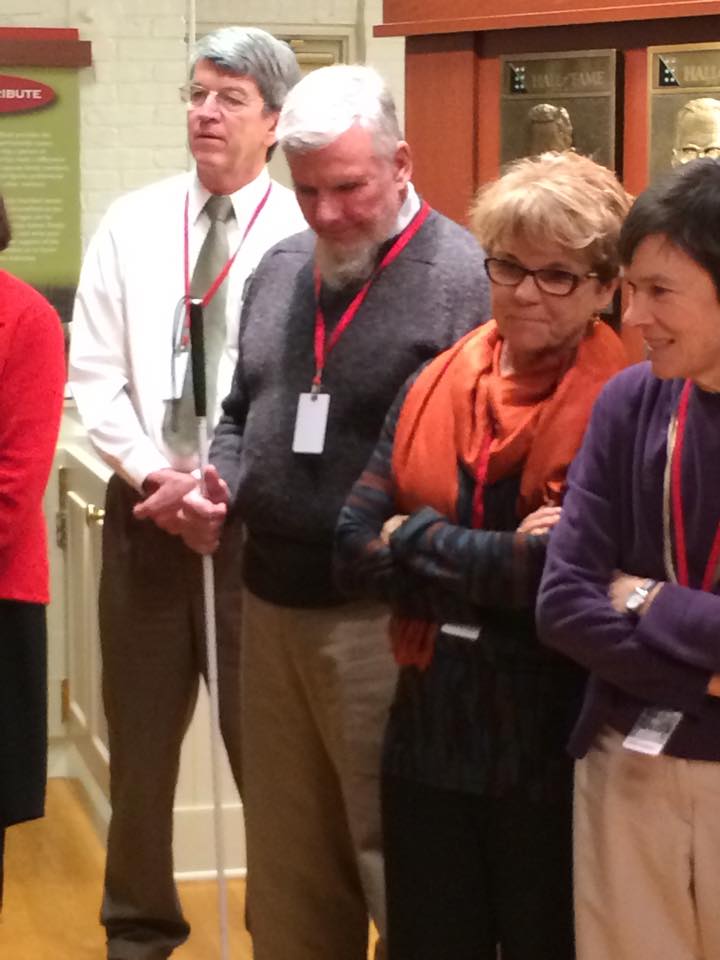
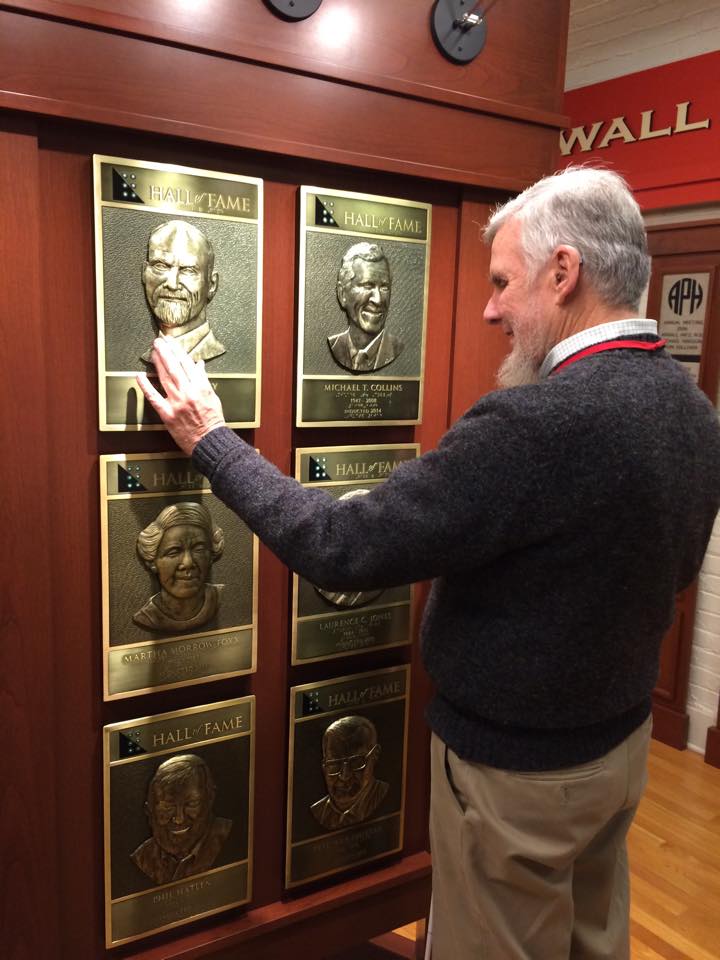
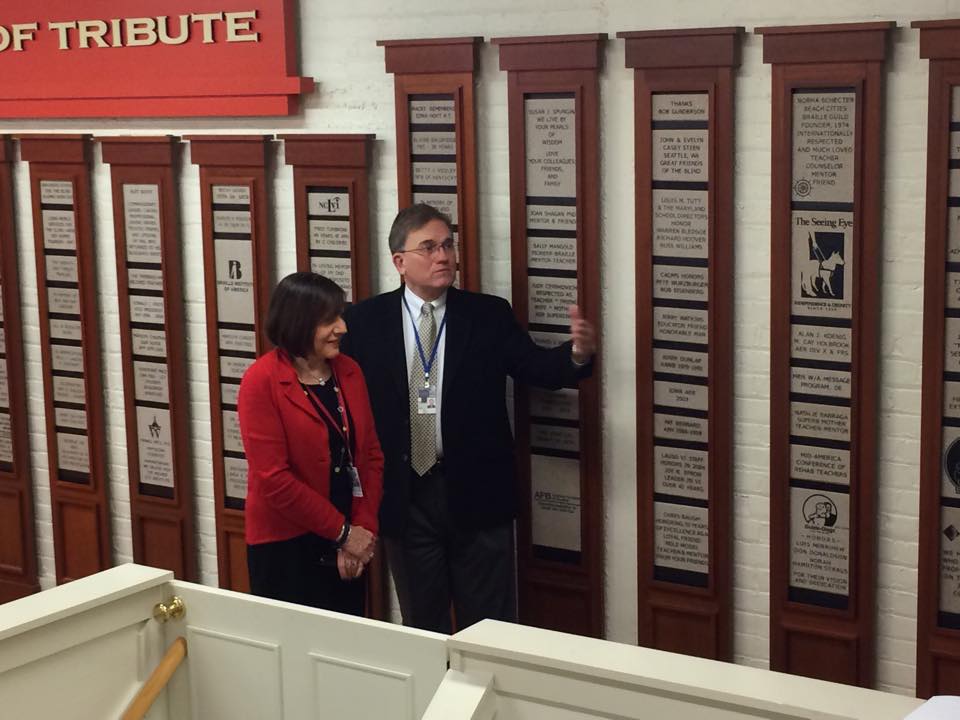
September 17, 2014 — In Memoriam Richard Welsh

It is with great sadness that we report the passing of Dr. Richard Welsh. Welsh was born in Pittsburgh, PA and received his doctorate in rehabilitation counseling from the University of Pittsburgh. He had three adult children and five grandchildren. He remarried in 2001 to fellow professional and APH staff member Mary Nelle McLennan.
Welsh was an instructor at Western Pennsylvania School for Blind Children, at the University of Pittsburgh, and then at Cleveland State University. Beginning in 1978, Welsh served as Superintendent of the Maryland School for the Blind. From 1990 until 2003 he was an administrator of Pittsburgh Vision Services. Welsh served as an Ex Officio Trustee of APH and provided his valued input on many Trustee committees.
The remarkable contributions to his chosen profession centered around Welsh’s visionary leadership in orientation and mobility. He was instrumental in establishing the O&M profession’s Code of Ethics. Welsh, along with co-editor Bruce Blasch, wrote the authoritative textbook Foundations of Orientation and Mobility. He also wrote many articles and chapters in texts on mobility and on the psycho-social aspects of rehabilitation of the people who are visually impaired.
Among the many honors Welsh received are the Migel medal from AFB in 2004, NCPABVI Leadership Award in 2003, AER’s Ambrose Shotwell Award in 1996, AER’s Lawrence Blaha Award in 1988 and the C. Warren Bledsoe Award from AAWB in 1981. Professional awards were named in his honor, and he was named the 2008 Distinguished Alumni of the University of Pittsburgh School of Education. Welsh was inducted into the blindness field’s Hall of Fame in 2008.
Welsh’s accomplishments are too numerous to list here, for more information on his extraordinary life, visit Welsh’s Hall of Fame biography page. Rick has been described as “larger than life,” a visionary leader, very humble, approachable and a wise mentor and role model who quietly listened to others and made them feel valued.
May 20, 2014 — Michael Collins and Newel Perry to be Inducted into the Hall of Fame for Leaders and Legends of the Blindness Field in 2014
The Hall of Fame is dedicated to preserving the tradition of excellence manifested by specific individuals through the history of outstanding services provided to people who are blind or visually impaired in North America. It is housed at the American Printing House for the Blind (APH) in Louisville, Kentucky, but belongs to all.
The ceremony to induct Collins and Perry, will take place on Friday evening, October 17, 2014, in conjunction with APH’s 146th Annual Meeting of Ex Officio Trustees and Special Guests, at the Hyatt Regency Hotel in Louisville, Kentucky. Joining the fifty-two outstanding legends previously inducted, are these two remarkable figures who changed lives around the world. Their stories of accomplishment are powerful.
The Class of 2014:
Michael T. Collins 1947–2008

Mike Collins dedicated 30 years of his career to Perkins; first as supervisor of the Perkins School for the Blind’s campus-based Deafblind Program and then as founder and director of the Hilton/Perkins International Program, with the mission of training teachers to teach children who are deafblind with multiple disabilities in developing countries. Under his leadership, the program grew from serving a few hundred students to helping more than 10,000 children annually in 63 countries. He traveled to dozens of countries as a “missionary” for children who are deafblind and blind with additional disabilities working with education and government officials. He was, however, most comfortable on a mat with students explaining to parents and teachers how to help students achieve more than their families and teachers thought possible. Before his extensive work in special education, Michael studied theological studies at St. John’s Seminary in Boston. He brought that care, compassion and understanding with him to his work with students who are deafblind.
Mr. Collins served as vice president and president of Deafblind International and was a board member of the International Council for Education of People with Visual Impairment. He also founded the National Coalition on Deafblindness. Collins received the distinguished Perkins’ Annie Sullivan Award and Deafblind International’s Lifetime Achievement Award and their Distinguished Service Award.
“His love for children with multiple disabilities and his deep understanding of their needs was evident when he visited programs and dangled children on his knee.” —Nandini Rawal, project director of the Blind People’s Association in Gujarat, India
Newel Perry (1873–1961)

Dr. Newel Perry was called the father of the modern civil rights movement of the blind. According to Matson (1990), Perry “presided as mentor and godfather to the [organized blind] movement,” spawning the California Council of the Blind (1934), and the National Federation of the Blind (1940). In 1912, Dr. Perry took the post which would define his career, Director of Advanced Studies at the California School for the Blind, and was in this position until retirement in 1947. He is best known for having mentored “Perry’s Boys (and Girls),” a group of talented blind young men and women who would, with Perry’s assistance, begin the organized blind movement of advocacy and civil rights.
Honors include: California Council of the Blind, Hall of Fame, 1996 (original member), California Council of the Blinds Newel Perry Endowment Trust, the National Federation of the Blinds highest award—named for Newel Perry, and, within NFB’s Jacobus tenBroek Library, the Newel Perry Conference Room, appropriately named for tenBroek’s beloved mentor.
“Newel Perry educated, indoctrinated and persuaded a distinguished group of cohorts to join him in carrying on the struggle and carrying out its goals. Those whom Doctor gathered around him were other blind men and women, mostly former students whose special talents and professional positions uniquely supplemented his.” Jacobus tenBroek, 1961
When asked what was his most important work, Dr. Perry answered, “Oh, my most important work was my dragging the blind out of their sleep, stirring them up, putting some ambition into them, and then helping them.”
April 2, 2014 — In Memoriam: Alice Geisler Raftary (1927–2014)
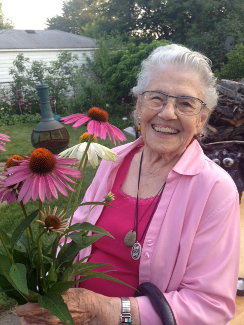
On Sunday morning, March 30, we lost a true friend and hero when Alice Raftary, often called the Mother of Rehabilitation Teaching, passed away quietly. Alice was one of the initial 32 inductees in to the Hall of Fame for Leaders and Legends of the Blindness Field in 2002. From that time forward, Alice became an ardent fan of, and asset to, the Hall. She participated in subsequent Induction Ceremonies through this past October, always intent on honoring those who were inducted and/or their families and friends. On the morning after the Induction Ceremonies, she often co-hosted a visit with the new inductees and/or their families in the Hall of Fame.
Alice put her life’s work in perspective this way, “It’s exciting to participate in the restoration of life styles. Helping people to progress from hopelessness to confidence and competence is a thrill and a joy.”
In a January 2014 interview for the Hall, Mike Bina asked Alice; What are three to five pieces of advice you would give those in the field? Her response, “Invest your time and some money into the growth of your profession. Join and be active in your professional associations (AERBVI, MACRT), go to conferences, etc. Continue to learn new techniques and new systems. Share your expertise. Mentor others in the field and encourage others to work in the field of blindness.”
Alice’s daughter and our friend, Mary, shared that, “we are suggesting donations in Mom’s name to the Hall of Fame.”
Her legacy of support and participation continues.
A Memorial Service is planned for June.
September 11, 2013 — Hall of Fame Then and Now, Revisited!
In 2010, we posted before and after renovation pictures of the Hall of Fame space. APH Museum Director Mike Hudson recently shared this photo of that same space circa 1931. The far wall is the Wall of Tribute.
Mike adds, “That floor (of APH) was added in 1927, and until 1931 it housed all of our presses. They were moved to the basement in 1931, but the machine shop stayed there until the late 30s, when it moved off-site along with all of our other presses. I have other photos of the floor showing presses, but that one is unique because of the angle—it is similar to the before and after shots you took of the Hall of Fame…”
August 30, 2013 — Online Donations Now Possible
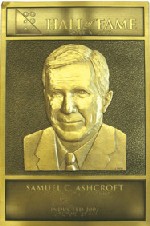
It is now easier than ever before to support the Hall of Fame: Leaders and Legends of the Blindness Field, thanks to our new Online Donation Page. Earmark your donation to sponsor a bas-relief plaque, or simply make a general donation. NEW! Ordering Wall of Tribute stones is now possible online as well.
May 17, 2013 — Martha Louise Morrow Foxx and Laurence Clifton Jones to be Inducted into the Hall of Fame for Leaders and Legends of the Blindness Field in 2013
The Hall of Fame is dedicated to preserving the tradition of excellence manifested by specific individuals through the history of outstanding services provided to people who are blind or visually impaired in North America. It is housed at the American Printing House for the Blind (APH) in Louisville, Kentucky, but belongs to all.
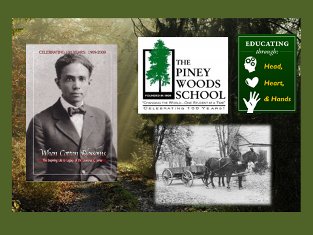
The ceremony to induct Ms. Foxx and Dr. Jones, connected through their work at Mississippi’s Piney Woods Country Life School, will take place on Friday evening, October 18, 2013 in conjunction with APH’s Annual Meeting of Ex Officio Trustees and Special Guests, at the Hyatt Regency Hotel in Louisville, Kentucky. Joining the 50 outstanding legends previously inducted, are these two remarkable historic figures who literally changed lives and altered history. Their stories of accomplishment—in the face of staggering odds—are still powerfully touching lives. Dr. Jones and Ms. Foxx opened, and held open, a door that was seen as forever closed to black Americans, including those who were blind. Their heroic actions were not accomplished without personal danger and danger to their fellow workers, their supporters, and students in their charge.
The Class of 2013:
Martha Louise Morrow Foxx (1902–1985)
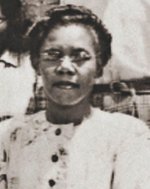
Ms. Foxx was the primary teacher of the blind at the Piney Woods Country Life School in Mississippi from 1929 until 1942. She then became principal until 1951, when the school moved to a new campus in Jackson, thus becoming the Mississippi School for Blind Negroes, where she served as director until retirement in 1969. Martha Louise began her journey in the Piney Woods as an 18-year-old (1928) graduate of the Overbrook School for the Blind (PA). She went on to study at several colleges during summers, earning her bachelor and master degrees.
Mrs. Foxx became widely known for her innovative and dynamic teaching philosophy which entailed instruction outside the walls of the school. She insisted that the students be allowed to enjoy outings into the woods around Piney Woods School to hone their senses of touch, sound, and smell. Using what were considered to be progressive techniques she taught students to read braille and large print and insisted that they learn to be self reliant and develop careers to insure they would succeed in making their own way after graduating from the school. Teachers, both black and white, from around the country, came to the Piney Woods to learn and embrace her methods—all before PL 94-142, IDEA, and the Civil Rights movement. This was happening in the heart of our segregated country. It took courage, persistence and unlimited patience. Her curriculum was adopted by the “white” school for the blind in the late 1940s.
“Challenging minds, expanding possibilities, securing opportunities, and changing what it means to be blind for African-Americans who happened to be blind — this is what Mrs. Fox did with her life. She accepted the call, challenged her limits, and impacted lives by making a difference in the dignity and quality of life of hundreds of blind individuals who are now living all across America. Those same individuals are carrying on her legacy not only today, but for many years to come.” —Barbara White Hadnott, former student
Dr. Laurence C. Jones (1884–1975)

The Piney Woods School was founded in 1909 by Dr. Jones as a place to provide vocational and academic schooling for poor black children and grandchildren of slaves in the rural piney woods area—just south of Jackson, Mississippi. The school started with one 16-year-old student at a tree stump and the next day there were 2 more students. As word got around, the school continued to grow. Many students came in mule-drawn wagons and were dropped off with tuition partially paid in crops and homemade goods. Their families left them at the school with the hope of a better life made possible through education. All students at the school were required to work; they helped to grow food for the school, built and repaired the grounds, or toured in music ensembles. In an early photograph, the motto of the school reads “Work is the Mother of Contentment.”
In the 1920s, sparked by two events, Dr. Jones became aware that there was no school to educate Negro children who were blind. He observed a young blind girl begging on the streets of Vicksburg and a young blind boy, whose sharecropper parents were killed in a fire, was left at the school for him to care for. Never one to turn away a child in need or a challenge, and believing every child deserved an opportunity, Dr. Jones added the education of blind children to the school’s purpose which remained a focus until 1951.
Dr. Jones authored several books and tirelessly toured the country telling of the work and inviting national and international dignitaries to visit the campus. He attracted both white and black teachers from around the country to the Piney Woods to learn the methods used at the school for the blind. He advocated education which touched “the mind, the heart, and the hands.” This credo was evidenced in education for the mind, spiritual growth and service for the heart, and putting the hands to good old fashioned work.
Dr. Jones was a pioneering educator of the blind in Mississippi and he is credited with guiding the Mississippi Blind School for Negroes towards its move to Jackson and eventually to integration. The first big step was embodied by the creation of a new campus in Jackson in 1950, after almost 30 years of effort. In 1945, Helen Keller, after visiting the school and learning of Dr. Jones and Miss Foxx and their work, helped convince the Mississippi legislature to fund the establishment of the school. The Piney Woods School received state funding and moved to become a sister school of the Jackson based Mississippi School for the Blind.
The combined efforts of Dr. Jones and Ms. Foxx were rewarded when the two campuses combined in 1974. “Dr. Jones should be noted and recognized for his work in the field of blindness. Because of his willingness to take on the challenge of educating black children, including those that were blind, Mississippi can tout the legacy of Martha Foxx. Dr. Jones was the first spark that initiated a fireball of interest and support to educate all children, including those of former slaves and those who were blind. This leader dared to educate the excluded. This leader dared to include a department to educate the blind which was far different from the expectations during that time. His leadership and professional practice are unsurpassed.” —Dr. Rosie L. T. Pridgen
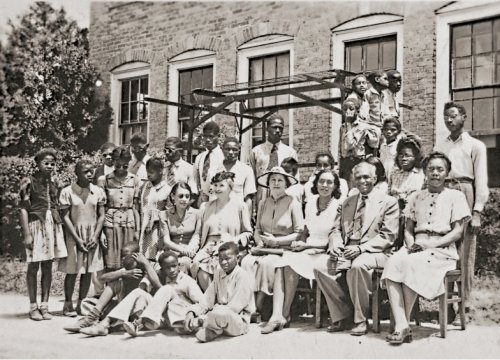
Helen Keller visits the Piney Woods School in 1945. Dr. Jones and Mrs. Foxx are seated on the first row to the far right.
For additional information on Dr. Jones, Ms. Foxx and the Piney Woods School, visit this website: http://captionmax.com/blog/2012/02/dr-laurence-jones-martha-louise-morrow-foxx/ or the Piney Woods School website: http://www.pineywoods.org/
Dean and Naomi Tuttle Honored for their Work
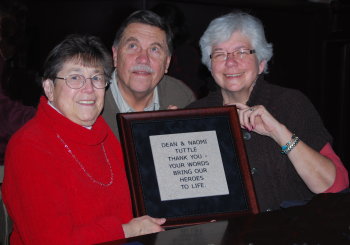
All Hall of Fame biographies through 2011 were written by Dean and Naomi Tuttle.
On behalf of the Governing Board of the Hall of Fame for the Blindness Field, Dr. Kay Ferrell framed and presented Dr. Dean and Naomi Tuttle with a copy of the engraved stone that is now mounted on the Wall of Tribute in the Hall of Fame. This tribute honors Dean and Naomi for creating the first 48 Hall of Fame Inductee biographies! As the stone states: Their words truly do bring our heroes to life. The Board also thanks the many fans and friends of the Tuttles whose donations made this possible.
May 30, 2012 — Phil Hatlen and Pete Wurzburger to be Inducted into the Hall of Fame for Leaders and Legends of the Blindness Field in 2012
The Hall of Fame for the Blindness Field is housed at the American Printing House for the Blind (APH) in Louisville, Kentucky. The Hall, which belongs to the entire field of blindness, is dedicated to preserving the tradition of excellence manifested by specific individuals through the history of outstanding services provided to people who are blind or visually impaired in North America.
To date, forty-eight outstanding professionals have been inducted into the Hall. Joining those legends are two remarkable icons, each of whom has mentored professionals and consumers throughout their careers and as a result their impact will be felt for generations to come.
The ceremony to induct Dr. Phil Hatlen and Mr. Pete Wurzburger will take place on Friday evening, October 12, 2012 in conjunction with APH’s Annual Meeting of Ex Officio Trustees and Special Guests, at the Galt House Hotel in Louisville, Kentucky.
The Class of 2012:
Philip H. Hatlen
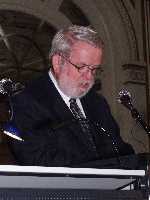
During his career, Dr. Phil Hatlen has served as Executive Director of the Blind Babies Foundation, founder and current board member of the Living Skills Center for the Visually Impaired now named the Hatlen Center for the Blind, Professor at San Francisco State University, and Superintendent of the Texas School for the Blind and Visually Impaired. He has also served as President of the Council of Schools for the Blind, President of the Association for the Education of the Visually Handicapped, Co-Chair of the National Agenda, and Executive in Residence at the American Printing House for the Blind.
Dr. Hatlen has written extensively on curriculum for students with visual impairments and on education placement issues. He is the author of what is considered the most important pillar in the instruction of children with visual impairments in the field today — The Expanded Core Curriculum.
Among his honors, Dr. Hatlen has received AER’s Josephine L. Taylor Leadership Award and the Mary K. Bauman Award, AFB’s Migel Medal, CEC-DVI’s Distinguished Service Award, CEC’s Outstanding Leadership Award, and APH’s Wings of Freedom Award.
Induction into the Hall of Fame is intended for individuals who have made “significant contributions to improve the lives of those who are blind or visually impaired in such areas as professional practice, research, writing, leadership, direct service, and/or in their professional organizations.” Phil Hatlen has contributed in all of these areas, sometimes simultaneously, but always with passion, conviction, innovation, and sagacity. —Dr. Kay Ferrell
Berdell “Pete” Wurzburger
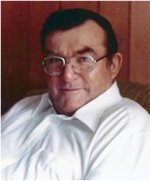
During his career, Pete Wurzburger served as Coordinator and Professor of the San Francisco State University Graduate Program in Orientation and Mobility (O&M), and taught O&M skills at the Hines Center, at the Orientation Center for the Blind, and at Sonoma State Hospital.
Mr. Wurzburger, who was one of the first peripatologists in the field, was extremely innovative. He founded and served as the first president of the California Association for Orientation and Mobility Specialists (CAOMS), invented the “marshmallow tip” for multiply disabled students who needed constant contact—now used worldwide, was one of first to teach O&M to preschool children, and was the first university professor to accept a blind or visually impaired person into the O&M program.
Among his awards Mr. Wurzberger received AER’s Blaha Award, the first NCAOMS Berdell “Pete” Wurzburger Biennial Award, the Sandy Kolterman Award, and AFB’s Migel Medal.
Pete made it clear, in words and actions, that he considered every client his equal, deserving of the same respect and dignity as every human being. Pete never judges people. Rather, he takes them as they are, warts and all, nurtures them, finds the good in them, and supports them. —Dr. Phil Hatlen
Rod Kossick video interviews: Warren Bledsoe, Russell Williams, and Stanley Suterko
Watch these uncut video interviews from Rod Kossick with Hall of Famers Warren Bledsoe, Russell Williams, and Stanley Suterko.
2011 Induction Ceremony Videos Are Available
Class of 2011: Edward Ellis Allen; Sally Rogow
Video: Jim Deremiek: Opening Remarks and History
Download Jim Deremiek: Opening Remarks and History video
Video: 2011 Induction Ceremony
Download 2011 Induction Ceremony video
Video: Sally Rogow Response
Download Sally Rogow Response video
2010 Induction Ceremony Videos Are Available
Class of 2010: Morris Frank; M.C. Migel
Hall of Fame 2010 Induction Ceremony
Download 2010 Induction Ceremony video
Morris Frank
Download Morris Frank in his own Words video
May 31, 2011 — Sally Rogow and Edward Allen to be Inducted into the Hall of Fame for Leaders and Legends of the Blindness Field
The Hall of Fame for the Blindness Field, founded in 2001, is housed at the American Printing House for the Blind (APH) in Louisville, Kentucky. The Hall, which belongs to the entire field of blindness, is dedicated to preserving the tradition of excellence manifested by specific individuals through the history of outstanding services provided to people who are blind or visually impaired in North America. The Hall is guided by a nine member Governing Board.
To date, forty-six outstanding professionals have been inducted into the Hall of Fame. Joining those legends are two remarkable icons whose impact has been felt internationally. The ceremony to induct Dr. Sally Rogow and Dr. Edward Allen will take place Friday evening, October 14, 2011, in conjunction with APH’s Annual Meeting of Ex Officio Trustees and Special Guests, at the Galt House Hotel in Louisville, Kentucky.
The Class of 2011:
Edward Ellis Allen (1861-1941)

Dr. Edward Ellis Allen was instrumental in professionalizing the field of education for students who are blind and visually impaired. His high personal and professional standards infuse the work of our schools for the blind daily. Allen oversaw the design and construction of two residential schools for the blind: Overbrook (1899) and Perkins (1912) which are still in use. In 1920 he created the first teacher training program for students who were blind and visually impaired in partnership with Harvard College, now housed at University of Massachusetts Boston. Allen Introduced the first interpoint and interlinear braille embossing equipment in the U.S. in 1898 and sponsored research and the development of standardized testing which established that the intelligence of people with visual impairment is unimpaired.
“Edward Ellis Allen’s greatest contribution lay in his insistence that educational methods focus on the student. His forward-thinking innovations presaged the child-centered teaching methods that are the foundation of our field today. His educational innovations were driven by the understanding that the needs and gifts of the individual student must be integrated into the teaching plan.” —Jan Seymour-Ford
Sally Rogow
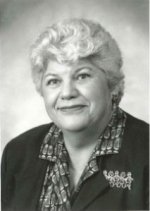
Dr. Sally Rogow is a renowned educator, researcher, author, and human rights advocate who pioneered teacher preparation programs in the area of visual impairment across Canada. Among her accomplishments were creating and directing the master’s program at the University of British Columbia (UBC) and her studies significantly expanding our understanding of language development and literacy in children with disabilities. Rogow has shared her findings in numerous books, articles, stories, and presentations. Following her retirement from UBC, Dr. Rogow became an international advocate against the abuse and neglect of children with disabilities through her writings, lectures, and as director of The Person Within program.
“Dr. Rogow’s boundless energy stems from her uncompromising belief in human potential and equality and from her celebration of diversity. Her unflagging resolve to advance the needs of students with visual impairments is a wonderful inspiration to all and I, like so many others, am deeply indebted to her. Dr. Rogow exemplifies the commitment, self-reflection, professionalism, expertise, and humility needed to enable children to reach their full potential.” —Dr. Erika Forster
May 11, 2010 — Morris Frank and M. C. Migel will be Inducted into the Hall of Fame for Leaders and Legends of the Blindness Field
The Hall of Fame for Leaders and Legends of the Blindness Field, founded in 2001, is housed at the American Printing House for the Blind (APH) in Louisville, Kentucky. The Hall, which belongs to the entire field of blindness, is dedicated to preserving the tradition of excellence manifested by specific individuals through the history of outstanding services provided to people who are blind or visually impaired in North America. The Hall is guided by a nine member Governing Board.
To date, forty-four outstanding professionals have been inducted into the Hall of Fame. Joining those legends are two remarkable icons from our past whose impact is still felt internationally. The ceremony to induct M. C. Migel and Morris Frank will take place Friday evening, October 15, 2010 in conjunction with APH’s Annual Meeting of Ex Officio Trustees and Special Guests, at the Galt House Hotel in Louisville, Kentucky.
The Class of 2010:
M. C. Migel
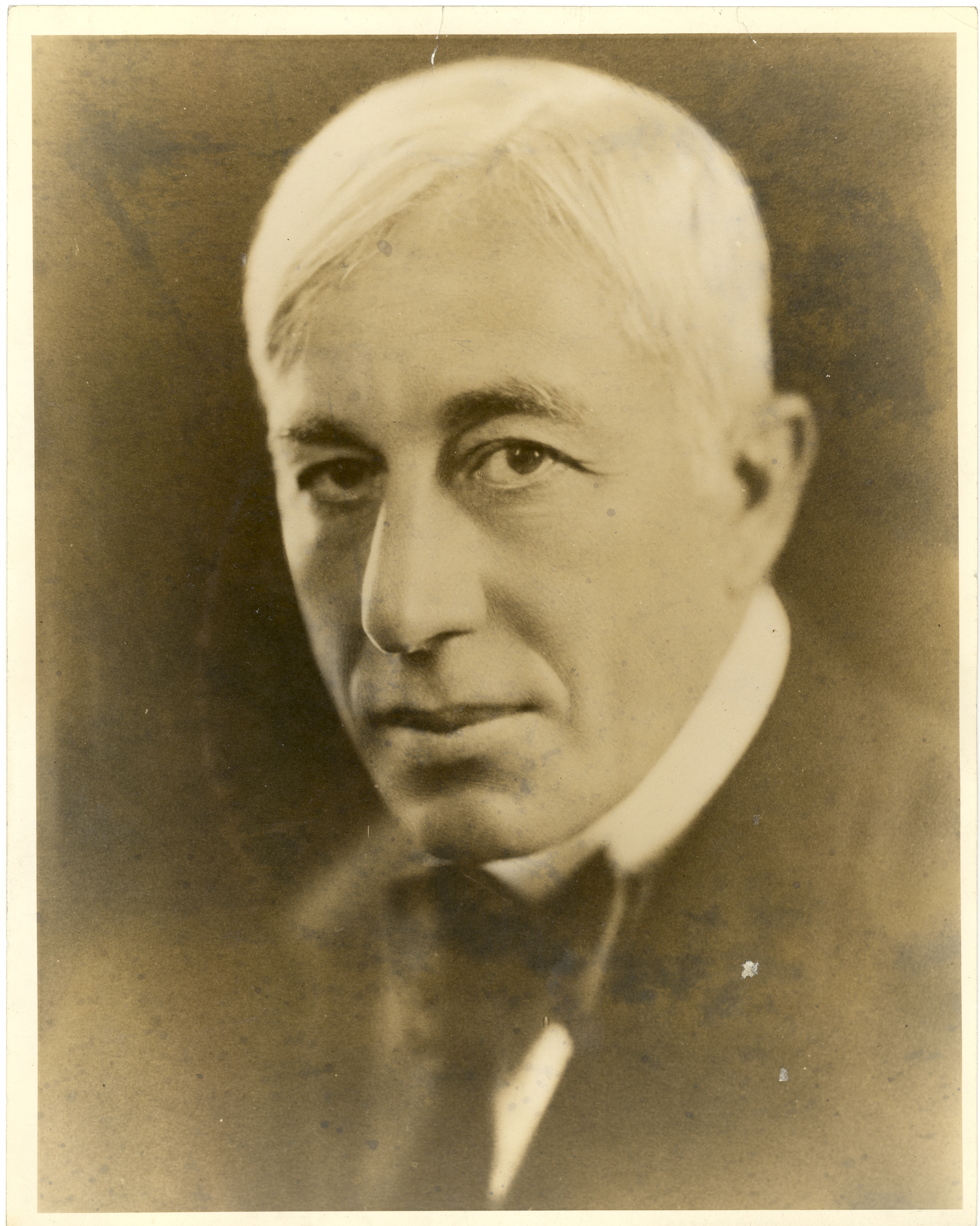
Working with the American Red Cross during World War I, Major Moses Charles Migel was exposed to countless veterans who lost their sight in combat. These experiences inspired him to dedicate himself to helping people with vision loss lead independent and fulfilling lives. Migel founded the American Foundation for the Blind in 1921 and served as President of the Board of Trustees until 1945. Among his honors was being proclaimed a Chevalier of the French Legion of Honor for his work in France during World War I.
“The past 20 years of my life’s work has been shaped by and dependent upon the work of M.C. Migel. Without his leadership, knowledge of the business world, and willingness to contribute personally, professionally, and monetarily, I honestly believe that the American Foundation for the Blind would not be the organization it is today.” —Carl Augusto
Morris Frank

As the first person in North America to use a guide dog, Morris Frank promised to spread the word about the independence and enhanced mobility that could be experienced. Together with Dorothy Harrison Eustis, Frank founded The Seeing Eye in 1929, basing the organization on the philosophy that limitless possibilities exist within the lives of people who are blind. He was almost single-handedly responsible for the passage of initial legislation relevant to dog guide access in every state and province.
His famous book, “First Lady of The Seeing Eye,” co-written with Blake Clark, was the story of Buddy, his first dog guide. This eventually led to being the subject of the Walt Disney movie, “Love Leads the Way.”
“It was his leadership and role modeling behavior that founded not only the first dog guide school but the entire industry — an industry that today has over 80 accredited schools around the world.” —James Kutsch, Jr.
January 1, 2010 — Hall of Fame Then and Now
The first photo shows the cleared Hall space in December of 2001. The second photo was December of 2010. Both were taken in approximately the same place with approximately the same people.
First photo: Don Keefe, Bob Brasher, Janie Blome, Gary Mudd, Will Evans

Second photo: Paul Zurkuhlen, Bob Brasher, Janie Blome, Gary Mudd, Will Evans

May 7, 2009 — Two Legends to Enter the Hall of Fame for Leaders and Legends of the Blindness Field in 2009
The Hall of Fame for Leaders and Legends of the Blindness Field, founded in 2001, is housed at the American Printing House for the Blind (APH) in Louisville, Kentucky. The Hall, which belongs to the entire field of blindness, is dedicated to preserving the tradition of excellence manifested by specific individuals through the history of outstanding services provided to people who are blind or visually impaired in North America. The Hall is guided by a nine member Governing Board.
To date, forty-two outstanding professionals who made significant contributions to the field of blindness have been inducted into the Hall of Fame. Now joining those legends are two remarkable individuals who will be inducted on Friday evening, October 16, 2009 during a ceremony that will be held in conjunction with APH’s Annual Meeting of Ex Officio Trustees and Special Guests, at the Seelbach Hotel in Louisville, Kentucky.
The Class of 2009:
Euclid Herie
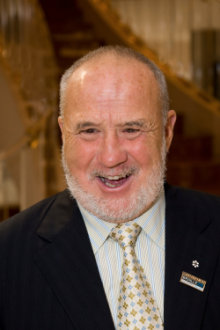
Dr. Euclid Herie exhibited tremendous leadership and vision as President of the Canadian National Institute for the Blind (CNIB) and as President of the World Blind Union. This inspiring and committed leader has continued to exemplify his strong advocacy for braille by establishing, in his retirement, a foundation to help implement braille literacy programs in developing countries. Dr. Herie has received many honors, including his 2001 appointment as CNIB President Emeritus. In 2002 he received AER’s Ambrose M. Shotwell Award. Herie is also the recipient of the Queen’s 50th Anniversary Commemorative Medal and the Canadian Government’s prestigious Member of the Order of Canada.
“Aside from his technical skills and brilliance as a public speaker, I value most highly his warmth of personality and ability to touch the lives of disempowered people.” —Dr. William Rowland
Dean Tuttle

Dr. Dean Tuttle served as the innovative Principal of the California School for the Blind before joining the faculty of the University of Northern Colorado where he created one of the finest, most respected teacher preparation centers in visual impairment in the country. His 58 publications include the classic text, Self-Esteem and Adjusting with Blindness, co-authored with his wife Naomi. Honors and awards include APH’s Wings of Freedom (2004), AFB’s Migel Medal (2000), and CEC/DVI’s Distinguished Service Award (1991).
“We should all be thankful that Dean Tuttle is blind. For in being blind, he has given us a legacy of insight and self examination that has provided new understandings about the children we teach.” —Dr. Kay A. Ferrell
2008 Induction Ceremony Video Is Available
Class of 2008: Sally Mangold, Ph.D.; Richard L. Welsh, Ph.D.
Download 2008 Induction Ceremony Video video
Bonus Movie! The Stone Presentations to Susan Spungin and Bob Brasher are also available:
Download Stone Presentations to Susan Spungin and Bob Brasher video
May 29, 2008 — Two Giants to Enter the Hall of Fame for Leaders and Legends of the Blindness Field in 2008
The Hall of Fame for Leaders and Legends of the Blindness Field, founded in 2001, is housed at the American Printing House for the Blind (APH) in Louis-ville, Kentucky. The Hall, which belongs to the entire field of blindness, is dedicated to preserving the tradition of excellence manifested by specific individuals through the history of outstanding services provided to people who are blind or visually impaired in North America. The Hall is guided by a nine member Advisory Board.
To date, forty outstanding professionals who made significant contributions to the field of blindness in the recent and distant past have been inducted into the Hall of Fame. Now joining those legends are two remarkable individuals who will be inducted on Friday evening, October 3, at a ceremony that will be held in conjunction with APH’s Annual Meeting of Ex Officio Trustees and Special Guests.
The Class of 2008:
Sally Mangold, Ph.D.
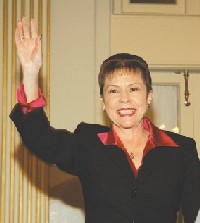
Sally Mangold served as a Resource Room teacher for students with visual impairments for 18 years. She followed that important role with that of Professor at San Francisco State University for another 18 years. Sally was a passionate proponent and champion of braille literacy throughout her career. She was a pioneer in the institution of the Distance Education Program at SFSU. She and husband Phil founded Exceptional Teaching Aids, a company promoting and selling products for visually impaired clients and teachers. Among her many achievements was the creation of the Mangold Developmental Program of Tactile Perception and Braille Letter Recognition, hailed as a landmark program for braille instruction.
According to AFB President Carl Augusto, “Sally Mangold’s writings, technol-ogical breakthroughs, and teachings have not only enabled children and adults who are blind or visually impaired to learn braille, but also have raised awareness to the critical importance of braille literacy.”
Among her awards and honors were the Association for Education and Rehabilitation of the Blind and Visually Impaired (AER) Josephine L. Taylor Leadership Award, the California Transcribers (CTEVH) Fred L. Sinclair Award, the Holbrook-Humphries Literacy Award, the American Foundation for the Blind Migel Medal, and the American Printing House for the Blind Creative Use of Braille Award.
Richard L. Welsh, Ph.D.

During his illustrious career, Rick Welsh has served as an orientation and mobility specialist, a college instructor and professor, a counselor, a coordinator of rehabilitation services, and an agency administrator, most notably as President of both the Maryland School for the Blind and Pittsburgh Vision Services.
Two of Dr. Welsh’s many significant contributions include co-editing the first and second editions of the primary textbook used by programs educating orientation and mobility specialists, Foundations in Orientation and Mobility, and providing the leadership in the consolidation of two prior, long-standing professional associations to form the Association for Education and Rehabilitation of the Blind and Visually Impaired (AER) in 1984. He then served as the first elected President of the organization.
Frances Mary D’Andrea observes, “Rick has that rare ability to take the long view, and with remarkable foresight to forge a vision of what could be–and then work hard to make it a reality.”
Among his honors and awards are the inaugural D.C./Maryland AER Chapter Service Award, established in his honor, the American Foundation for the Blind Migel Medal, the American Association for Blind Workers C. Warren Bledsoe Award, and the AER Ambrose M. Shotwell Award.
The entire historic 2002 Induction Ceremony is now available for viewing.
Download 2002 Induction Ceremony video
Virtual Tour of the Hall of Fame Now Online
2007 Induction Ceremony Video Is Available
Class of 2007: Charles F.F. Campbell; “Butch” Hill
Download 2007 Induction Ceremony video
New Video on Biography Pages
To view historic footage of meetings, dedications, and interviews with Georgie Lee Abel, Kathern Gruber, Berthold Lowenfeld, and Josephine Taylor, visit their Hall of Fame biography pages. The Hall gratefully acknowledges Dr. Phil Hatlen for providing these amazing videos.
New Video on the Website: AER/Hall of Fame Connections
This eight-minute Hall of Fame Video was produced for a general session of the 2006 AER International Conference in Utah. The video highlights the various AER connections with the Hall of Fame, including many of the engraved stones that appear on the Wall of Tribute.
Due to the popular demand after that viewing, DVDs of the presentation were sent to all AER chapters, divisions, and International officers. Now we have made the video available here on our website. Please feel free to share this video with any person or group who might be interested in AER and the Hall of Fame.
Download AER/Hall of Fame Connections video; AER/Hall of Fame Connections, Audio-only
May 21, 2007 — Two Giants to Enter the Hall of Fame for Leaders and Legends of the Blindness Field in 2007 Induction
The Hall of Fame for Leaders and Legends of the Blindness Field, founded in 2001, is housed at the American Printing House for the Blind (APH) in Louisville, Kentucky. The Hall, which belongs to the entire field of blindness, is dedicated to preserving the tradition of excellence manifested by specific individuals through the history of outstanding services provided to people who are blind or visually impaired in North America. The Hall is guided by a nine member Advisory Board.
To date, thirty-eight outstanding professionals who made significant contributions to the field of blindness in the recent and distant past have been inducted into the Hall of Fame. Now joining those legends is the Class of 2007, made up of two remarkable individuals who will be inducted in October at a ceremony that will be held in conjunction with APH’s 139th Annual Meeting of Ex Officio Trustees and Special Guests.
Come to the Induction Ceremony!
The Class of 2007:
Charles F.F. Campbell (1876-1935)

Charles Campbell led the development of modern vocational rehabilitation for blind adults through the establishment of work stations that demonstrated to blind people and the public the many and varied jobs that could be done without sight. In 1907, he launched a journal which has become the Journal of Visual Impairment and Blindness, and he led the creation of the American Foundation for the Blind (AFB) to continue the journal and to take on other projects of national significance. He then persuaded Helen Keller to dedicate her life to the support of AFB. “While I was still at Radcliffe College, his eloquent pleadings convinced my teacher and me that there was something we could do to better the condition of the adult blind.” —Helen Keller, 1936
“The modern conception of work for the adult blind throughout the entire country owes more to his inspirational, vivacious initiative than to any other single factor.” — C. W. Holmes 1936
Everett “Butch” Hill (1943–1994)

Dr. Hill‘s significant contributions to our body of literature include his work in spatial positional concepts, preschool orientation and mobility, and the classic textbook: Orientation and Mobility Techniques: A Guide for the Practitioner, co-written with Purvis Ponder. For the last 14 years of his life he served as Professor at Peabody College of Vanderbilt University where his teaching and mentorship of O&M practitioners was legendary. As recognition to his competence in this area, he received the first Outstanding Teaching Award from Peabody in 1986. “In his all too short 28 years with us, he single-handedly accomplished what he set-out to do when he entered the field of O&M, which was to heighten the awareness and recognition of the field of O&M by creating a well defined base of research literature.” —George Zimmerman
“Through his early work on concept development with children who were congenitally blind, Dr. Hill helped to build the bridge between the approach to the systematic delivery of orientation and mobility training as it was developed for adventitiously blinded adults and O&M services for congenitally blind children.” —Rick Welsh
April 3, 2007 — We’ve Decked the Hall with a New Website Design!
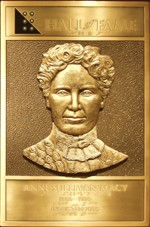
We’re excited to launch our redesign of the virtual Hall of Fame for Leaders and Legends of the Blindness Field.
The wealth of information on the Hall of Fame site has been reorganized for easier navigation. The site features:
- User-friendly, streamlined navigation
- Photos and bios of all 38 Hall of Fame inductees, including the new Class of 2006 inductees
- Additional photos of some inductees
- New photos of the Hall of Fame space, housed at APH
- New stones on the Wall of Tribute
- Information on how you can support the Hall of Fame
